Once a monastery church, then a mosque and subsequently a museum, the beautiful Chora now awaits the execution of a recent political decision. Following the decision to convert the 85 years old Hagia Sophia Museum once again into a mosque, the Turkish Government has recently decided to turn the Chora Museum into a mosque as well. However, maybe due to the ongoing restorations, the monument can still be visited as a museum, even though it has been officially transferred from the Turkish Ministry of Culture and Tourism to the Presidency of Religious Affairs. The political background and implications of this decision will not be discussed here because this site was never intended as a medium of political discussion. Let it suffice for me to concur with the point of view of the Presbyterian priest that I once met at the All Saints Church in the Moda district of Istanbul. According to him, religion (any religion) was meant to be personal. Making it a part of the political system or a means of social order for the society at large, transformed it into a tool of manipulation and deception. I couldn’t agree more. Likewise, ancient temples of any religion should be left out of daily political endeavours. As heritages of all mankind, they should be well kept and considered as cultural treasures of the world.
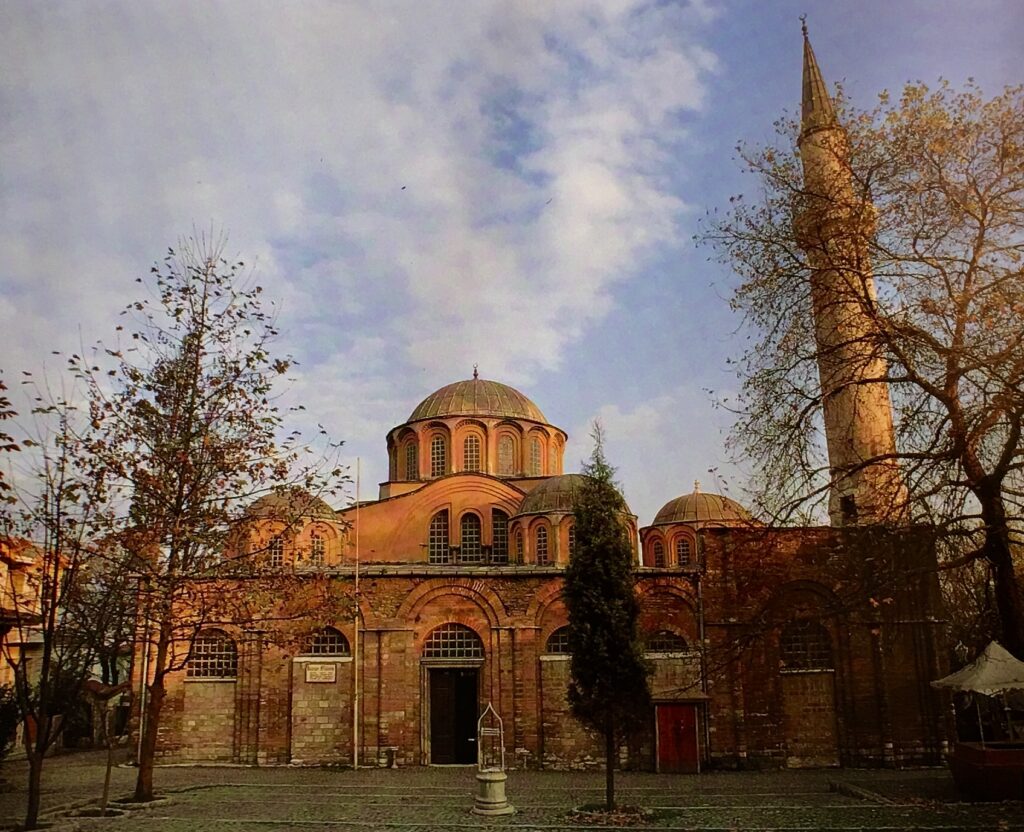
Source: Akşit, İ., The Museum of Chora, Mosaics and Frescoes
The Church of St. Saviour in Chora, by its original name, is yet another site which is often missed by regular tourists visiting Istanbul. This is a pity because, with its outstanding mosaics and frescoes, it is the most interesting and beautiful Byzantine church in Istanbul. It may not be able to compete in size and architectural marvel with Hagia Sophia but, nevertheless, the mosaics and the frescoes that it houses are incomparable. In each visit, you are bound to see new details that will astound you.
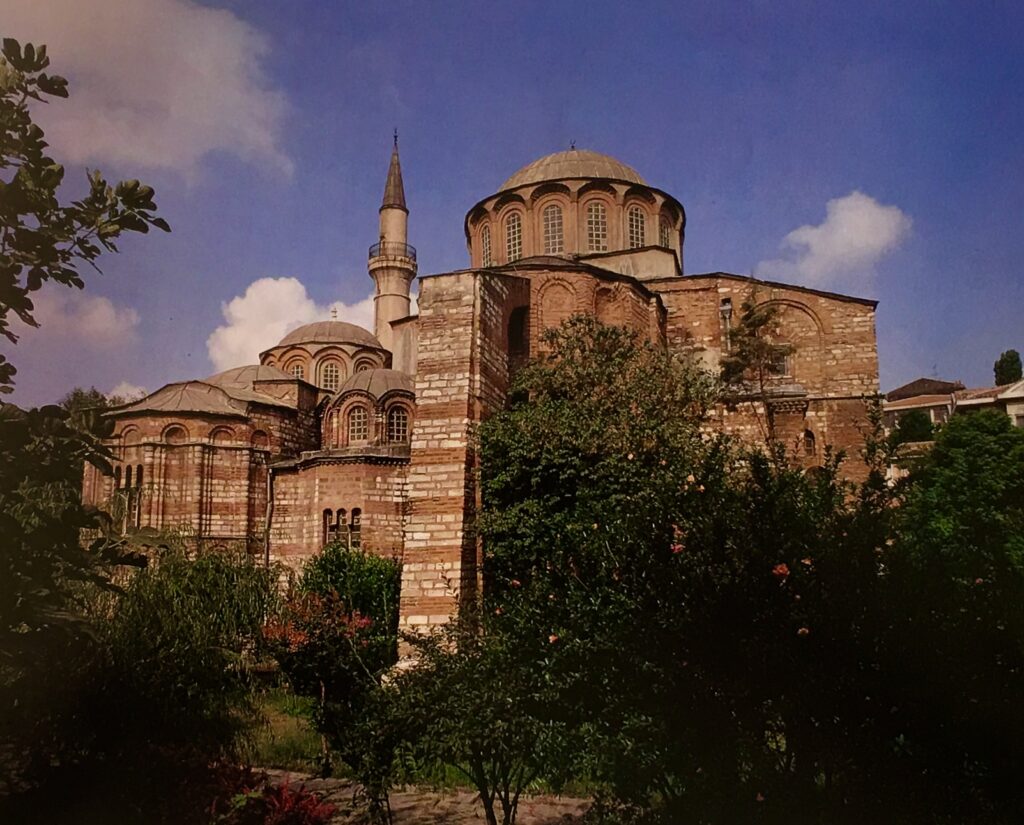
Source: Akşit, İ., The Museum of Chora, Mosaics and Frescoes
The name Chora, meaning countryside or suburb in old Greek, comes from the historical fact that, the monastery to which the church belonged was originally outside the city walls that were built by Emperor Constantine. The name remained the same even after the area was included within the Theodosian walls built by Emperor Theodosius in 413 A.D. According to Sumner-Boyd and Freely (1), in that sense it resembles the cases of St. Martin-in-the-Fields in London and St. Germain des Pres in Paris. However, following the inclusion inside the city walls, the name acquired a symbolic sense, considering Christ as the ‘country’ or ‘land’ of the Living. Today, Chora is in the Edirnekapı district of Istanbul.
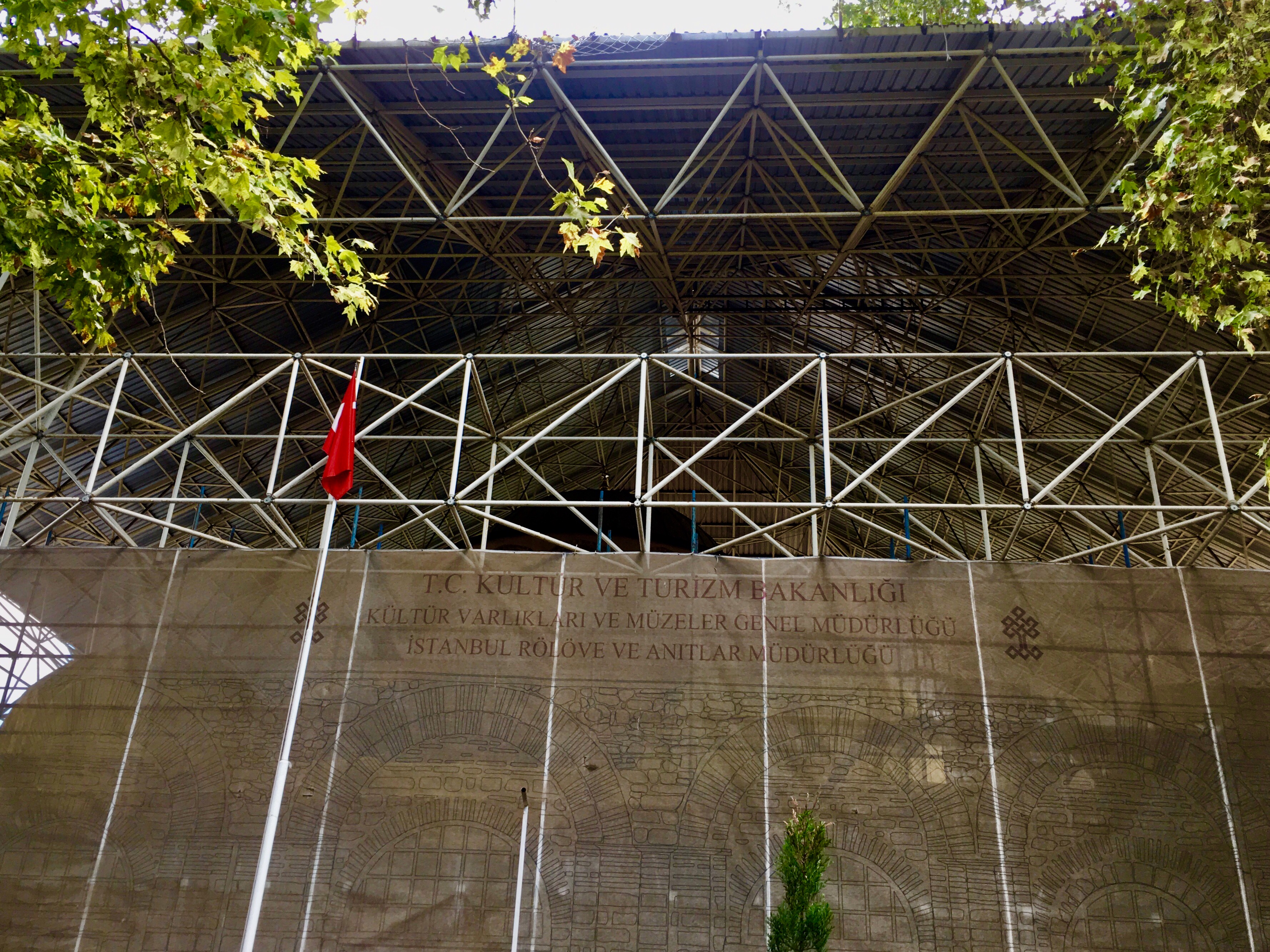
The Monastery of the Chora was severely damaged by an earthquake on October 6th, 557, during the reign of Emperor Justinian. It was rebuilt by the Emperor only to be in ruins once again during the 8th century. In 843 A.D. it was restored one more time, but, after that the history of the monastery and the church became shrouded in darkness. Currently, there is no trace of that ancient church nor is there any historical evidence about what happened until the 11th century.
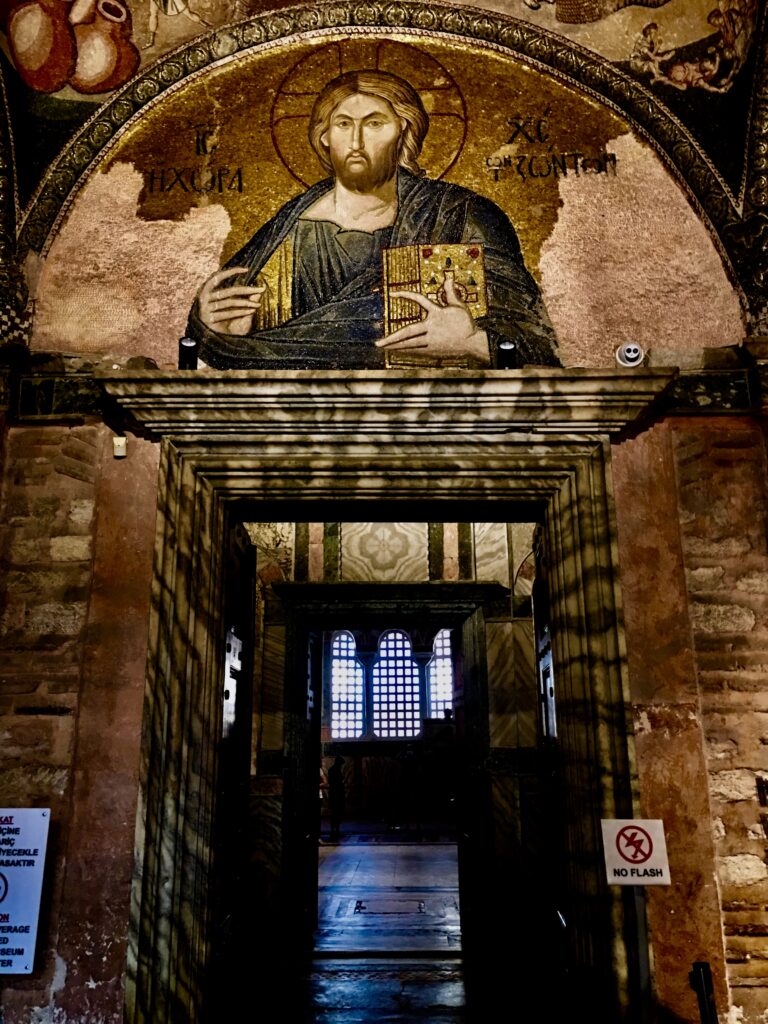
The first form of the present Chora building was built in the 11th century (between 1077-1081) by Maria Doukaina who was the mother-in-law of the Emperor Alexius I Comnenus. However, in time, the apses of this building collapsed due to the slipping of the foundations at the east end. The building required remodelling which was done in the early years of the 12th century by the grandson of Maria Doukaina, Sebastokrator Isaac Comnenus.
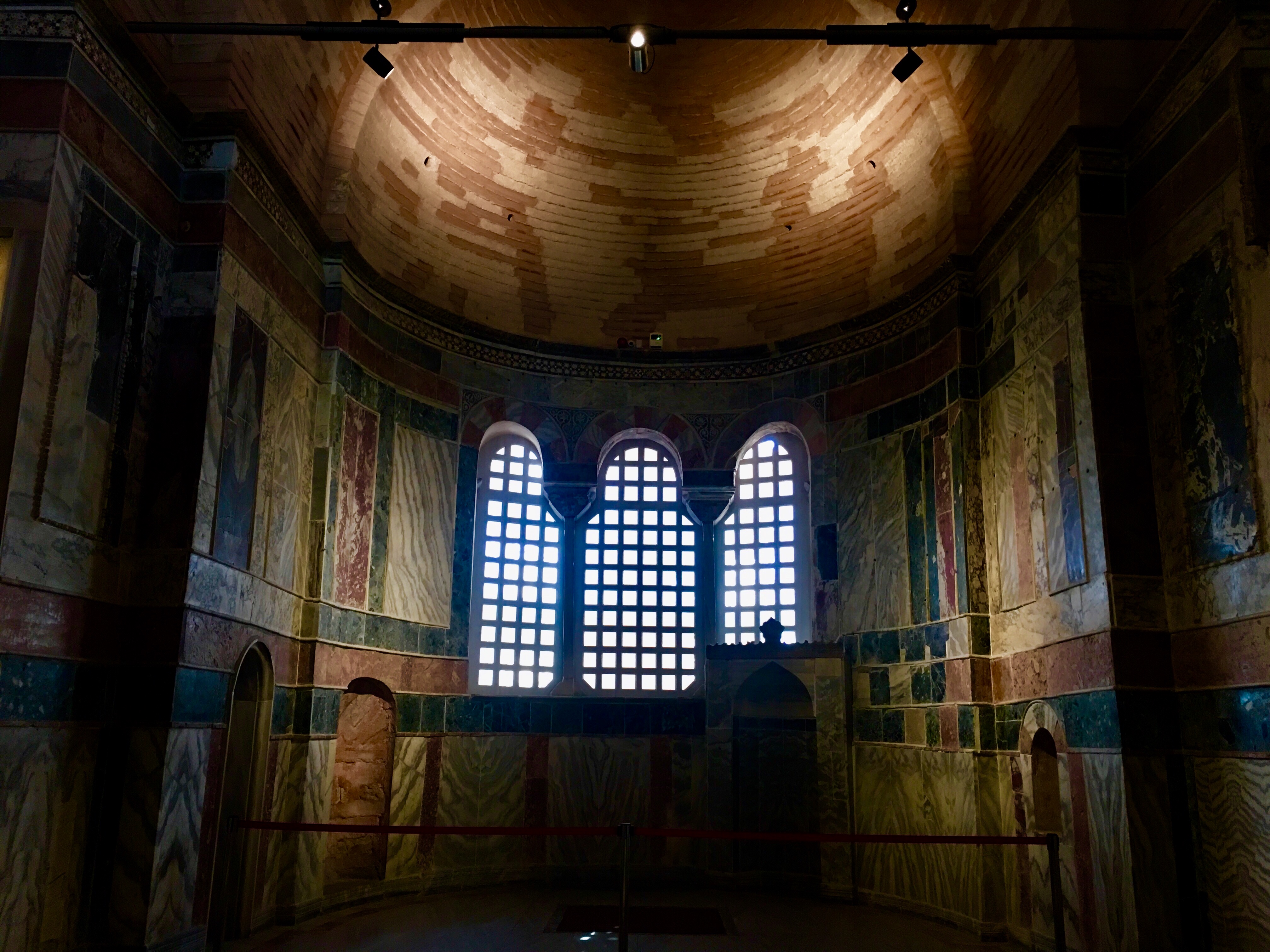
Luck seems to have definitely been on the side of the Chora during the Latin invasion of Constantinople between 1204-1261 when the city was ferociously plundered by the Crusaders. The Chora remained untouched while palaces and churches were looted. Maybe the church did not catch the attention of the invaders. Nevertheless, the Chora was once again reduced to a ruin, not because of looting but due to negligence in maintaining the Monastery. The golden age of the Chora Church was yet to come.
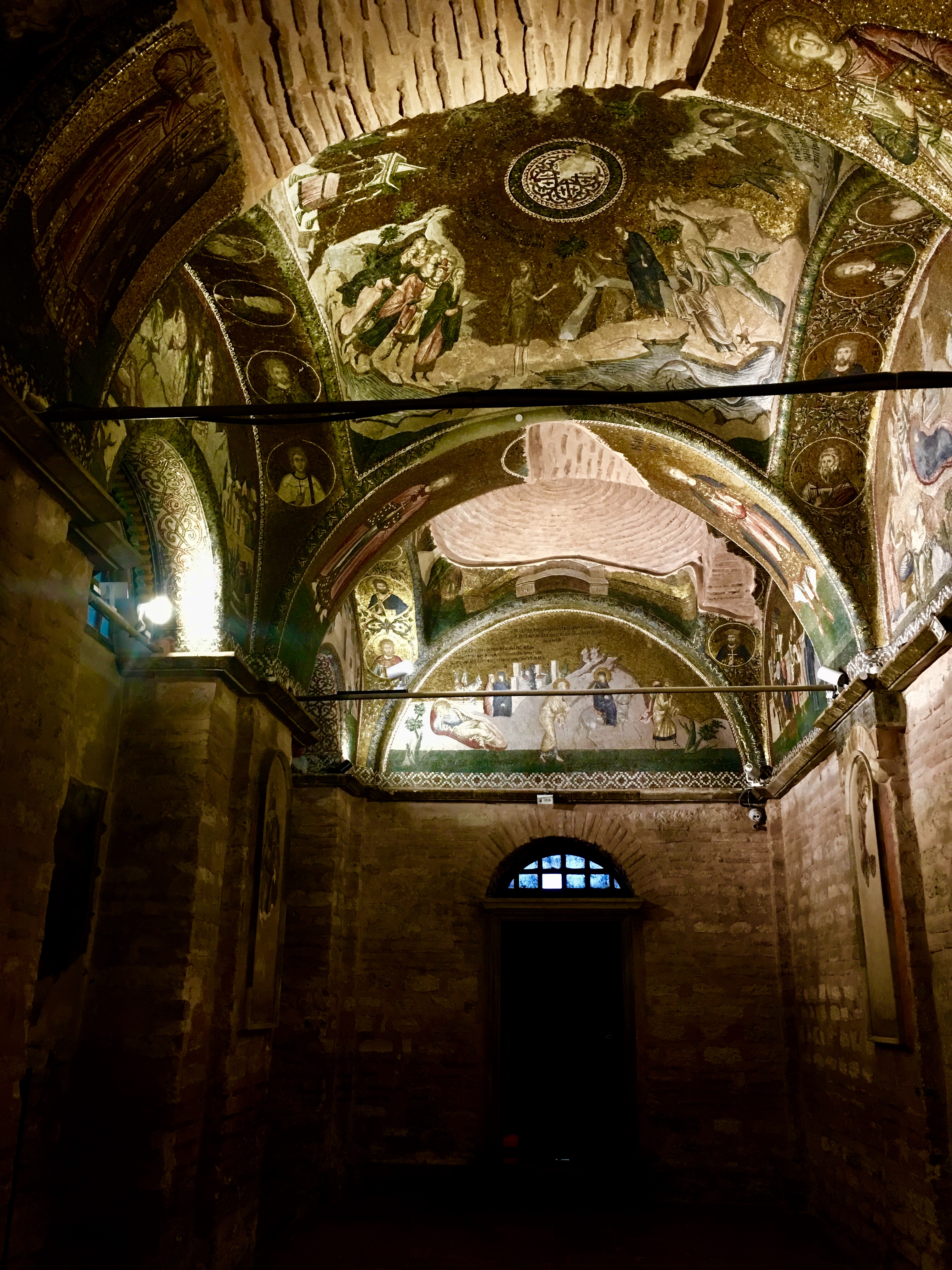
The fascinating Chora that we see today came into existence in the 14th century, thanks to a man named Theodore Metochites. In addition to being an auditor of the imperial treasury at the time of Emperor Andronikos II (1282-1328), Metochites was a poet and a man of letters. He was born in Nicea (İznik) as the son of a poor family. As an intelligent and determined man, he studied political science and literature whereby he climbed the social ladder in Byzantium. Having this kind of a background and living in the vicinity, Metochites dedicated his time, fortune and aesthetic taste to restoring and adorning the structure. He not only had the whole building restored but had a narthex and a chapel added to it. Moreover, between 1315-1321, he had the entire church adorned with beautiful mosaics and frescoes.
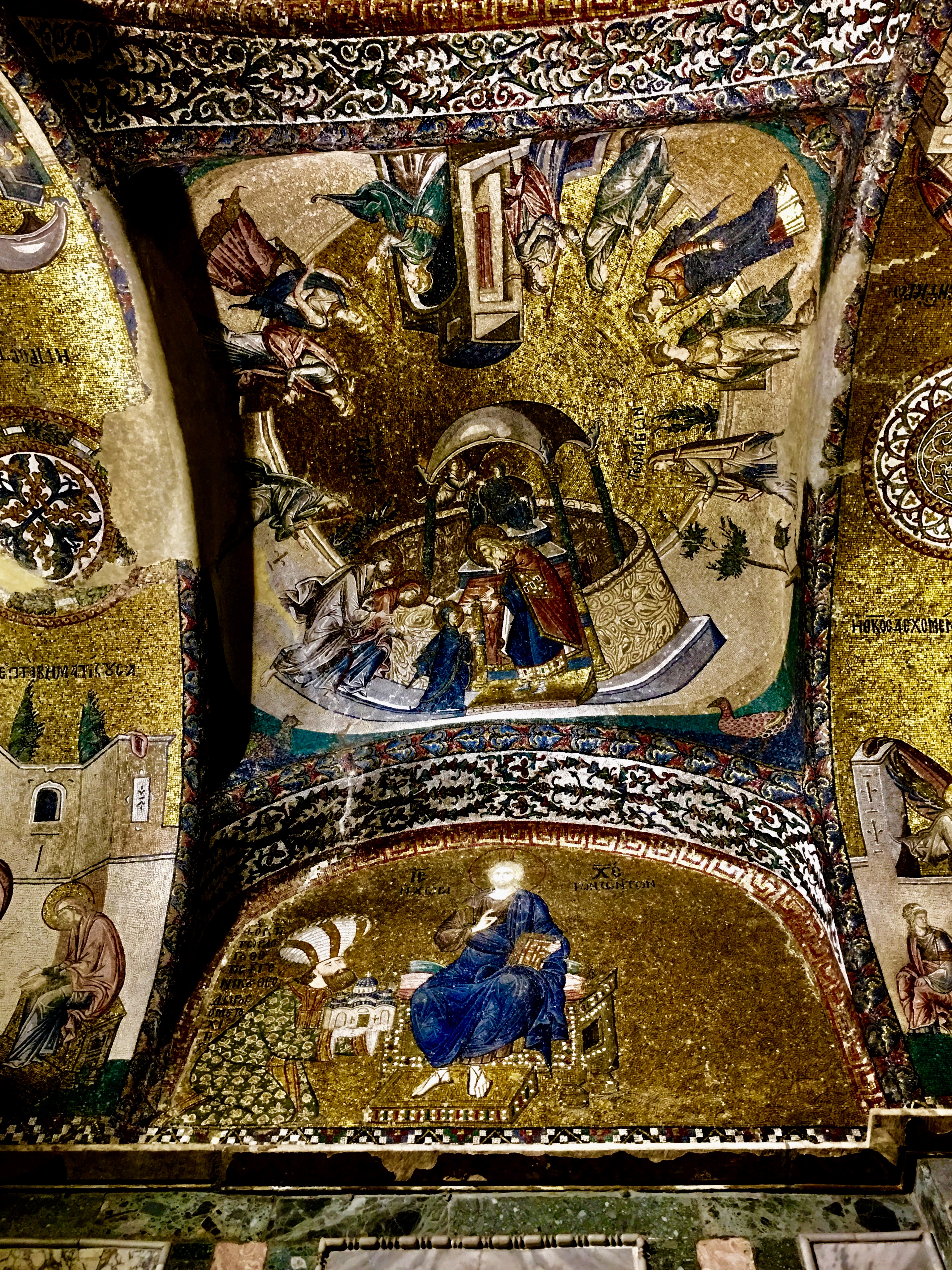
When Emperor Andronikos III ascended the throne by usurpation, Metochites was exiled to Western Thrace for the simple reason of being a loyal bureaucrat of the previous emperor. By the time he was pardoned and returned to the capital city, he was a sick and old man. In his last years, he took refuge in the Chora Church as a priest until his death in 1332.
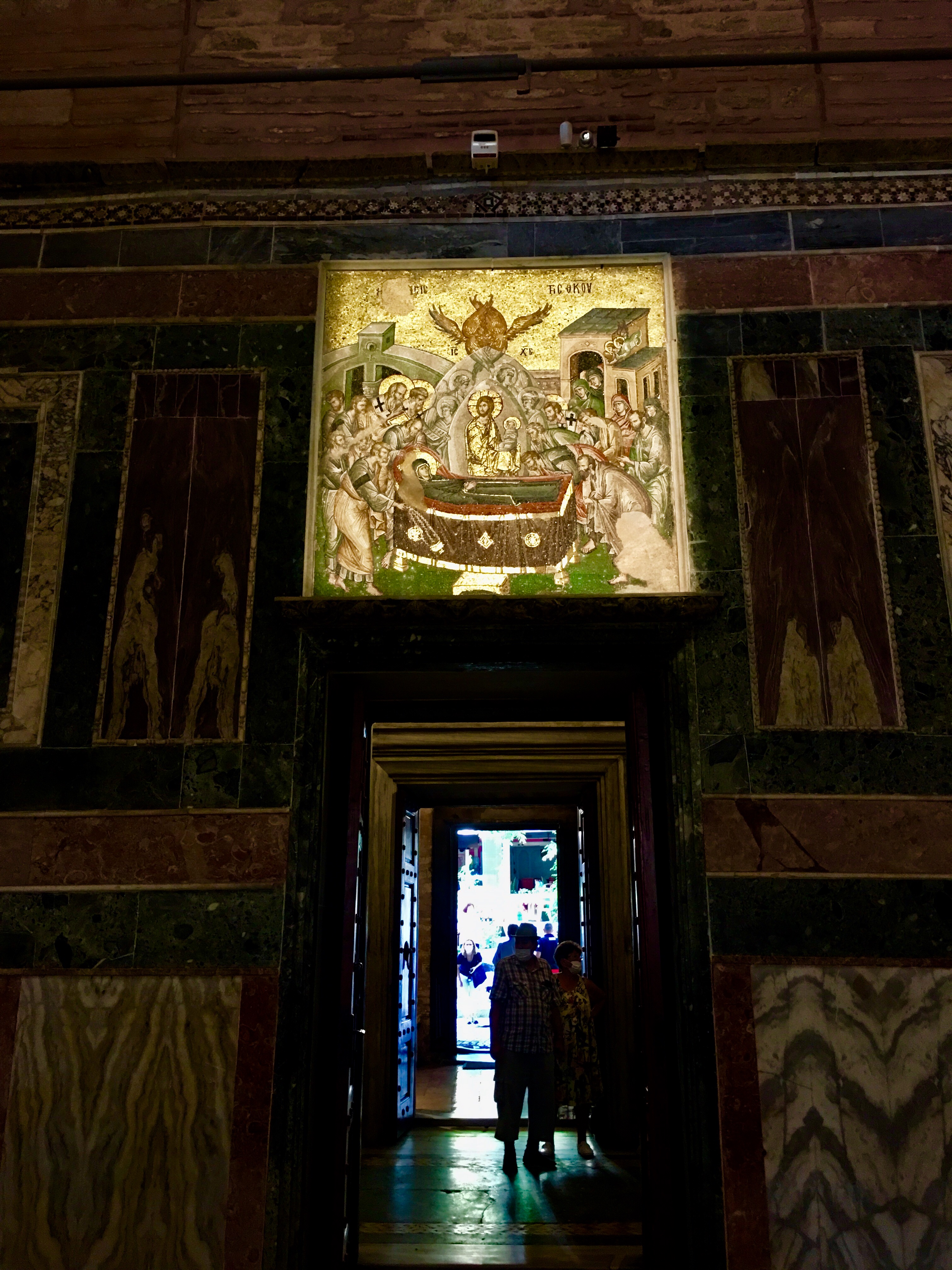
Chora remained as a church for 58 years after the conquest of Constantinople by Turks in 1453. It was converted into a mosque in 1511, by Atik Ali Pasha, the Grand Vizier of Sultan Bayezit II who was the son of Sultan Mehmet the Conqueror. The word “atik”, meaning “freedman”, in the Grand Viziers name is a clue about the high probability of his being of Christian origin and having converted to Islam as a devşirme. The act of converting the Chora Church into a mosque might be interpreted as a demonstration of his devotion to his new religion and to his pious Sultan.
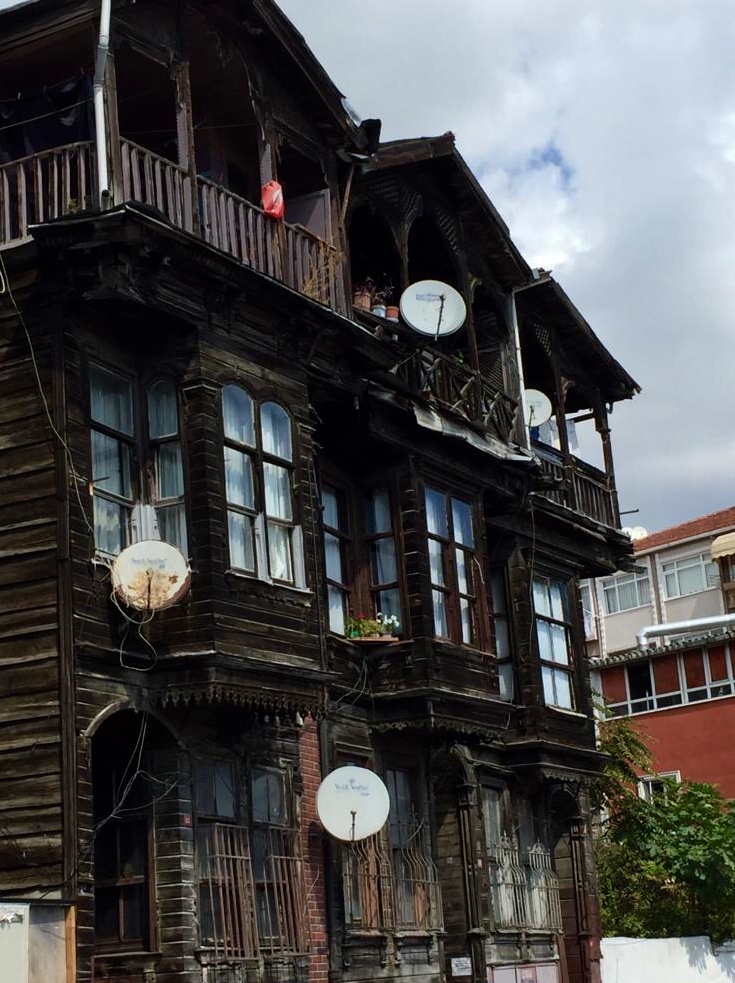
The structure of the church remained untouched after the conversion, except the addition of a minaret. The name became Kariye Mosque. The mosaics and frescoes were covered with plaster but not destroyed. However, some of them were shaken down by the many earthquakes that the ancient city lived through over the centuries. After 434 years, the mosque became a museum in 1945. The plaster and white-wash that covered the mosaics and the frescoes were removed and cleaned, between 1948-1958, thanks to the American Byzantine Institute.
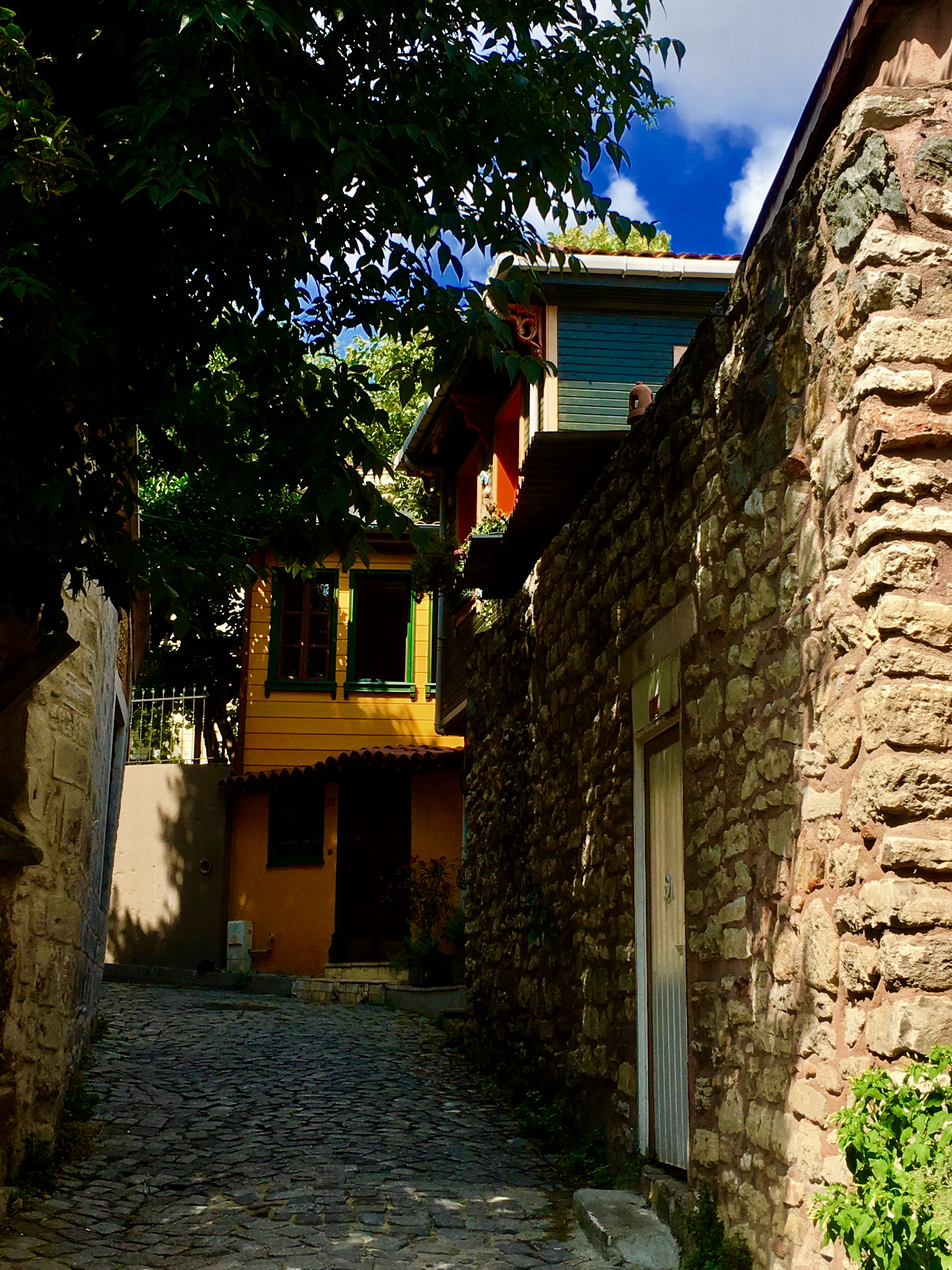
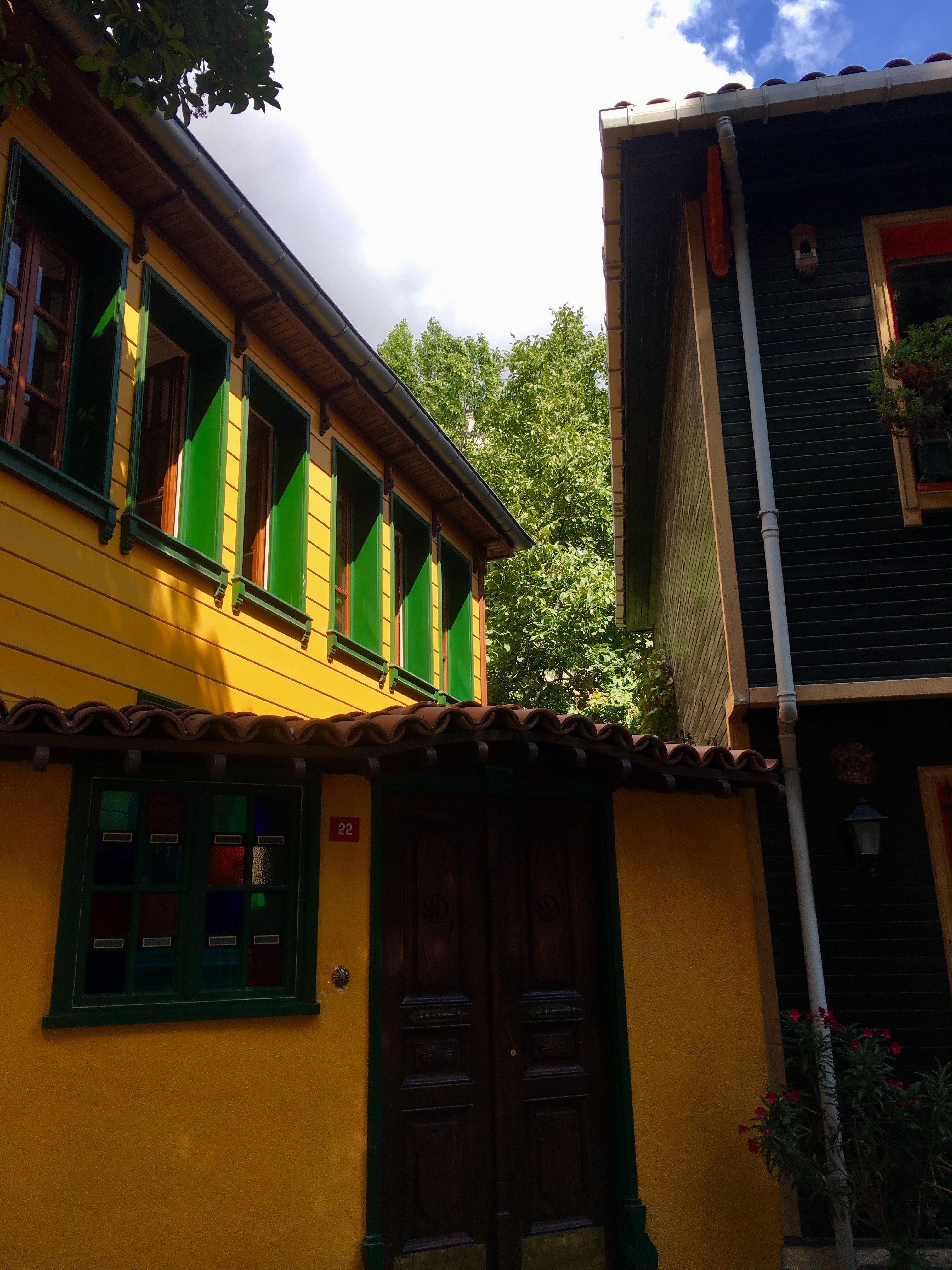
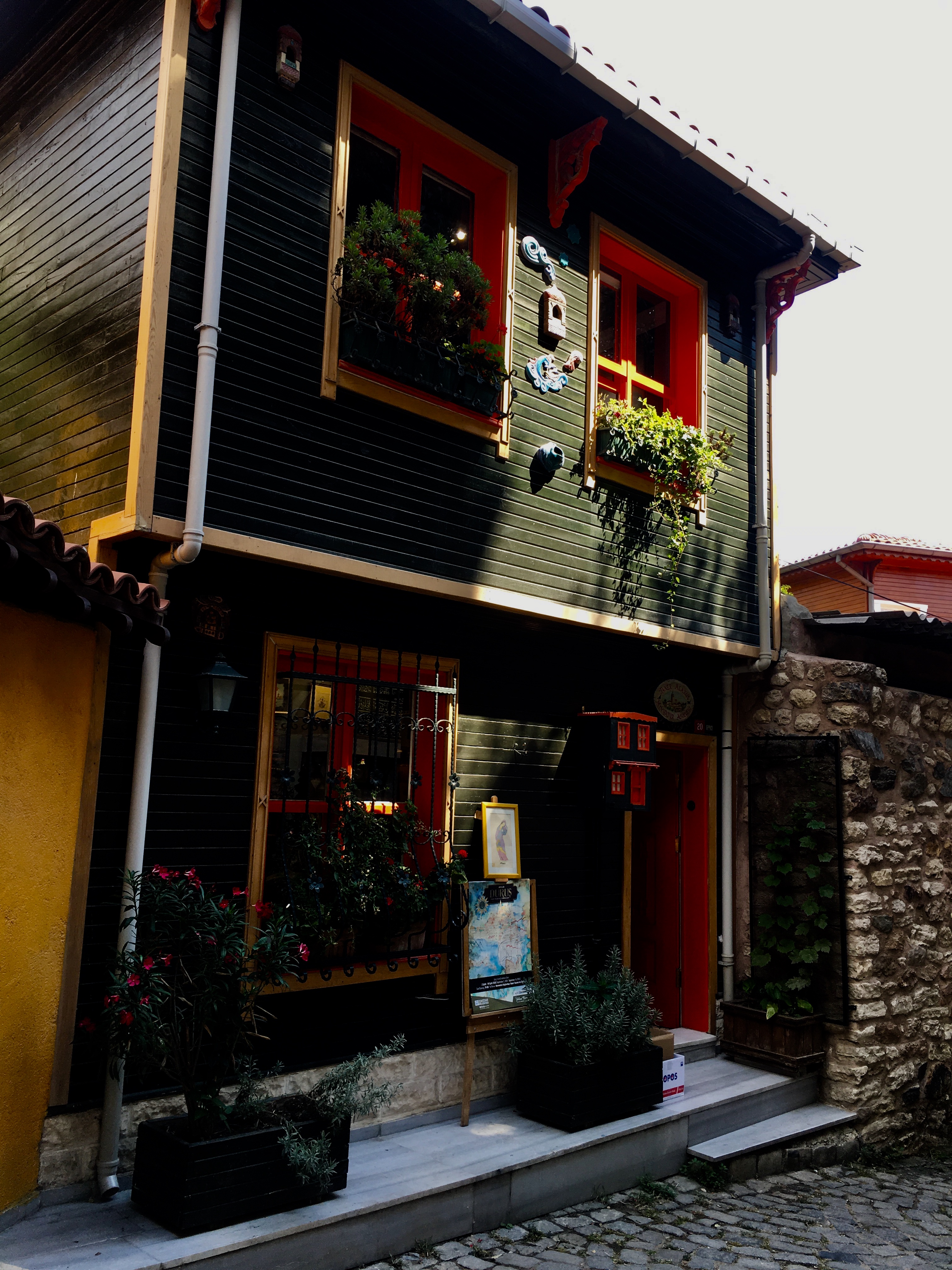
The Chora is in a district where there are plenty of old wooden Ottoman houses. Some of these have been renovated in recent years. A stroll in the area will give you an idea about how it must have been in Ottoman times even though the majority of the buildings are now ugly concrete blocks of apartments. There are also a number of small mosques in the area that were former Byzantine churches. The almost untouched architecture, except a minaret, makes them easily recognisable. The Chora itself, is in the middle of a small, “pedestrians only” square. Entering the square, you face the cute, almost toylike building. Unfortunately, visitors have been deprived of this first encounter for a long time due to the scaffold and cover that has been up for the past seven years of restoration.
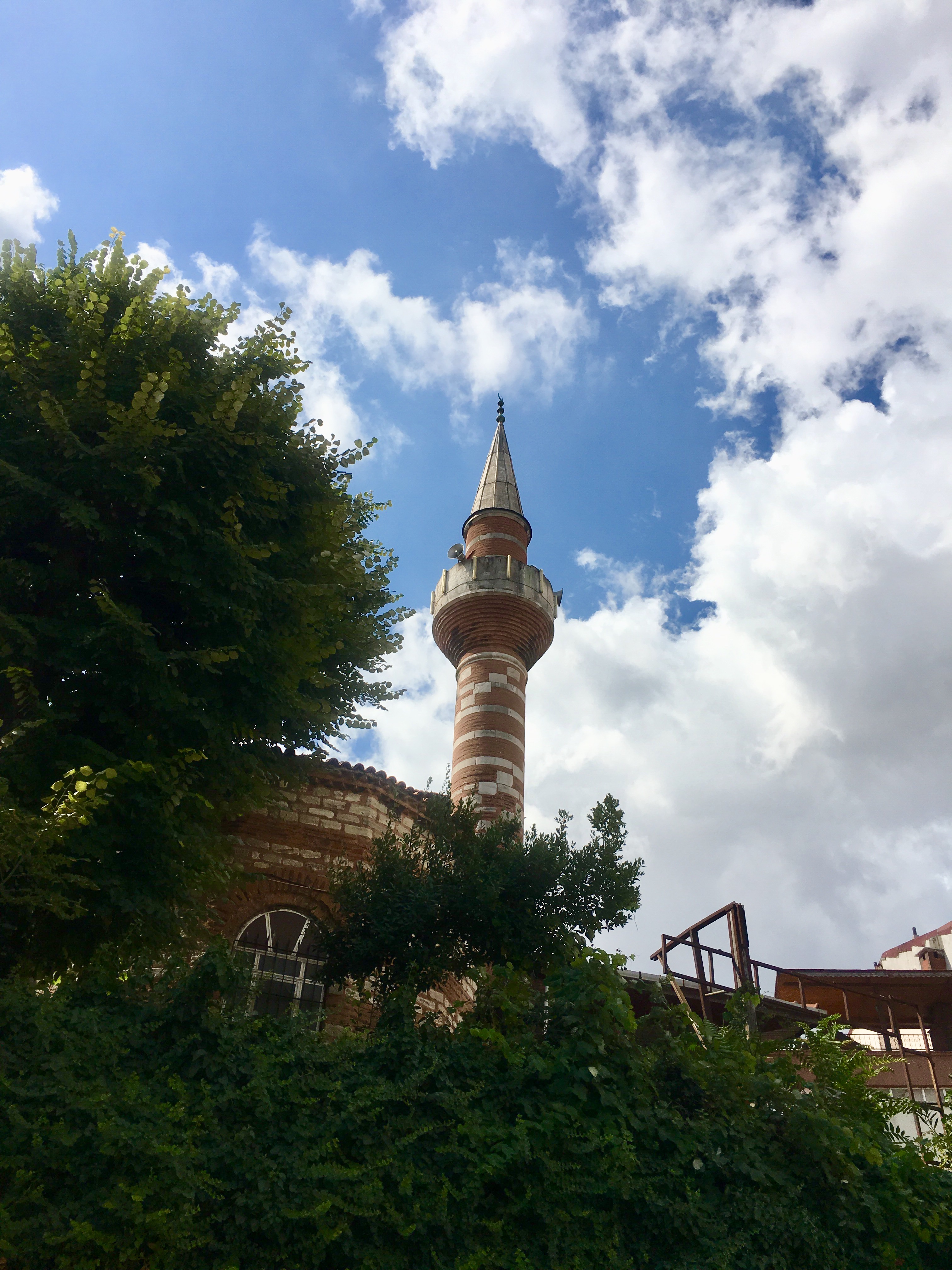
The building of the church currently covers an area of 742,5 square metres. It has six domes with the biggest dome having a diameter of 7,70 metres. Two of the domes are in the inner narthex, two at the right and left of the apse. The second biggest dome (4,5 metres) is in the Parecclesion, the mortuary chapel that was added to the south side of the original building.
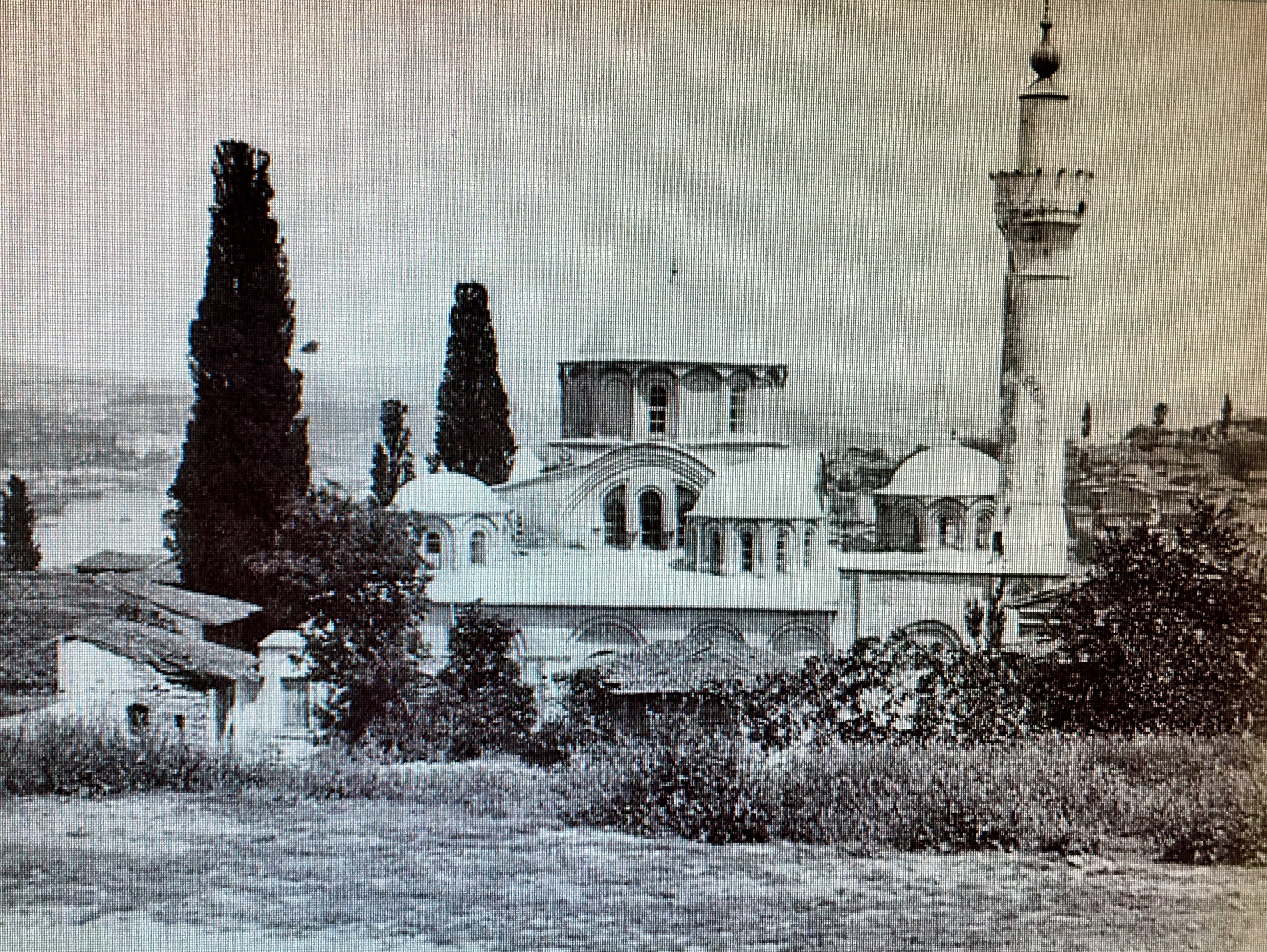
Source: thebyzantinelegacy.com
The most frequently used analogy by guides about the depictions in the Chora is their resemblance to a comic book. Not in terms of style of course, but rather in the sense that they demonstrate a sequence of stories. For example, in the northern wing of the inner narthex, the life story of the Virgin Mary is portrayed in eighteen beautiful mosaic panels. Experts claim that, this full depiction (from her conception by her mother Anne to her death) of Mary is very rare in Christian art. Likewise, in the northern wing of the outer narthex, we can follow the important phases of the life of the holy family, the birth and baptism of Jesus Christ and other scenes from his life.
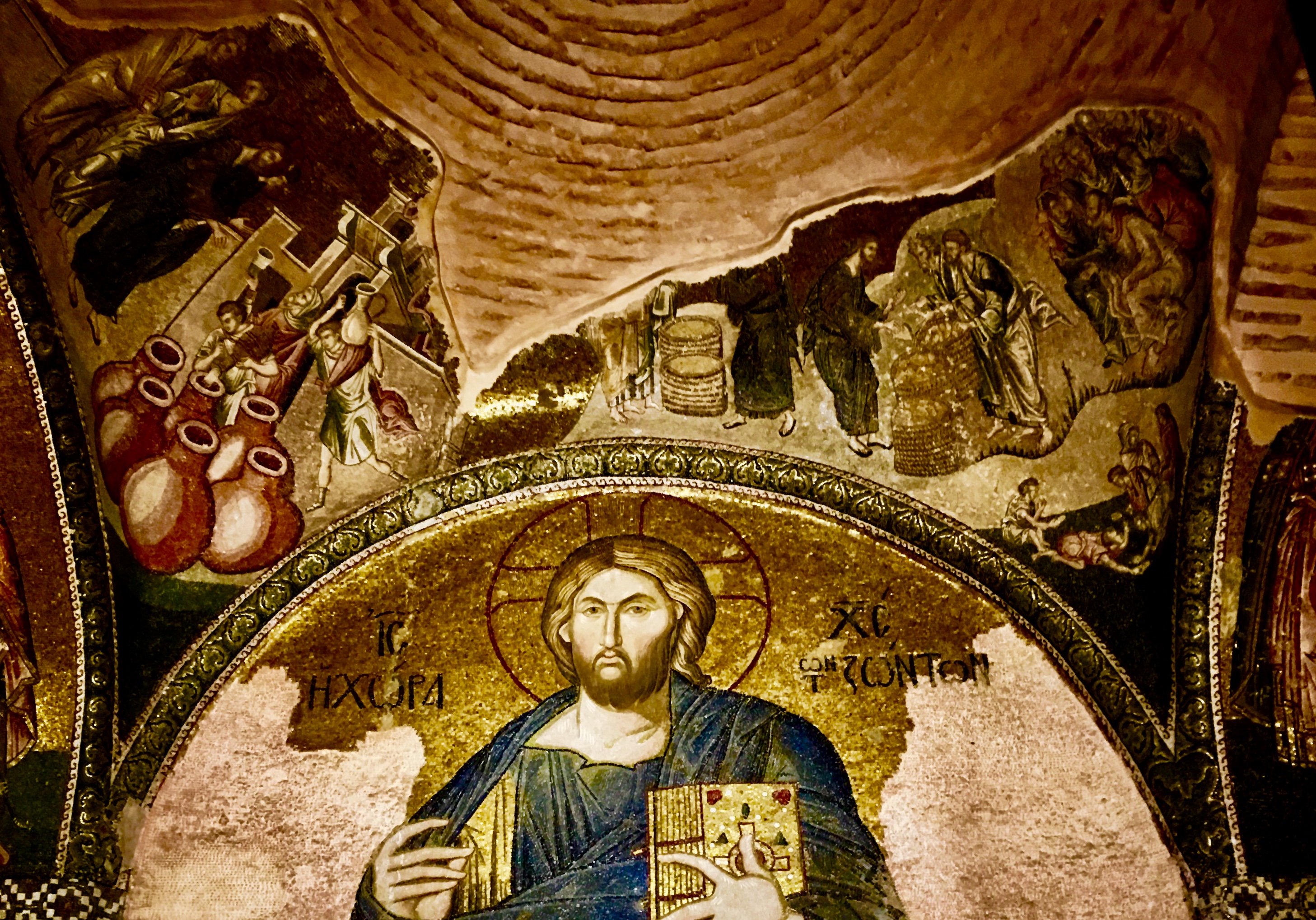
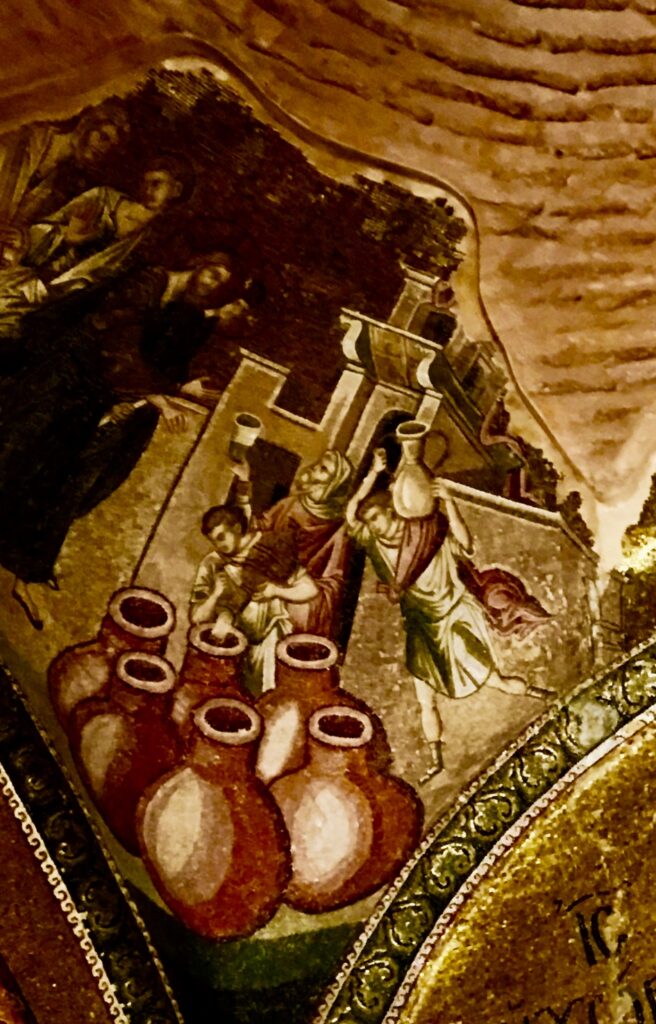
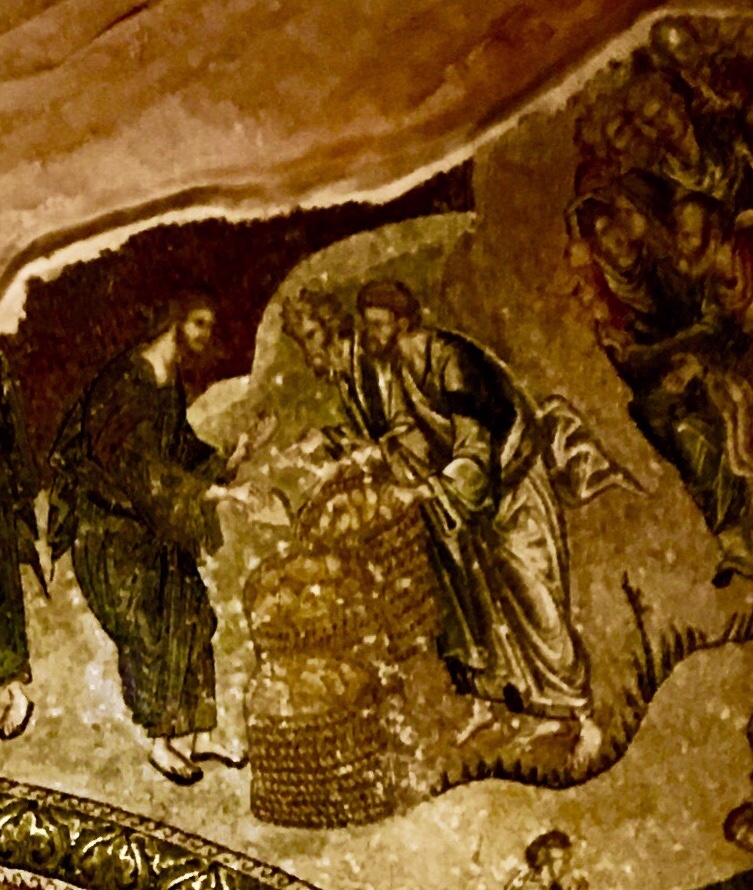
Unfortunately, it will not be possible to cover all the mosaics and frescoes of the church in this post. However, I do hope that it will give you an idea about their beauty and how extraordinary they are.
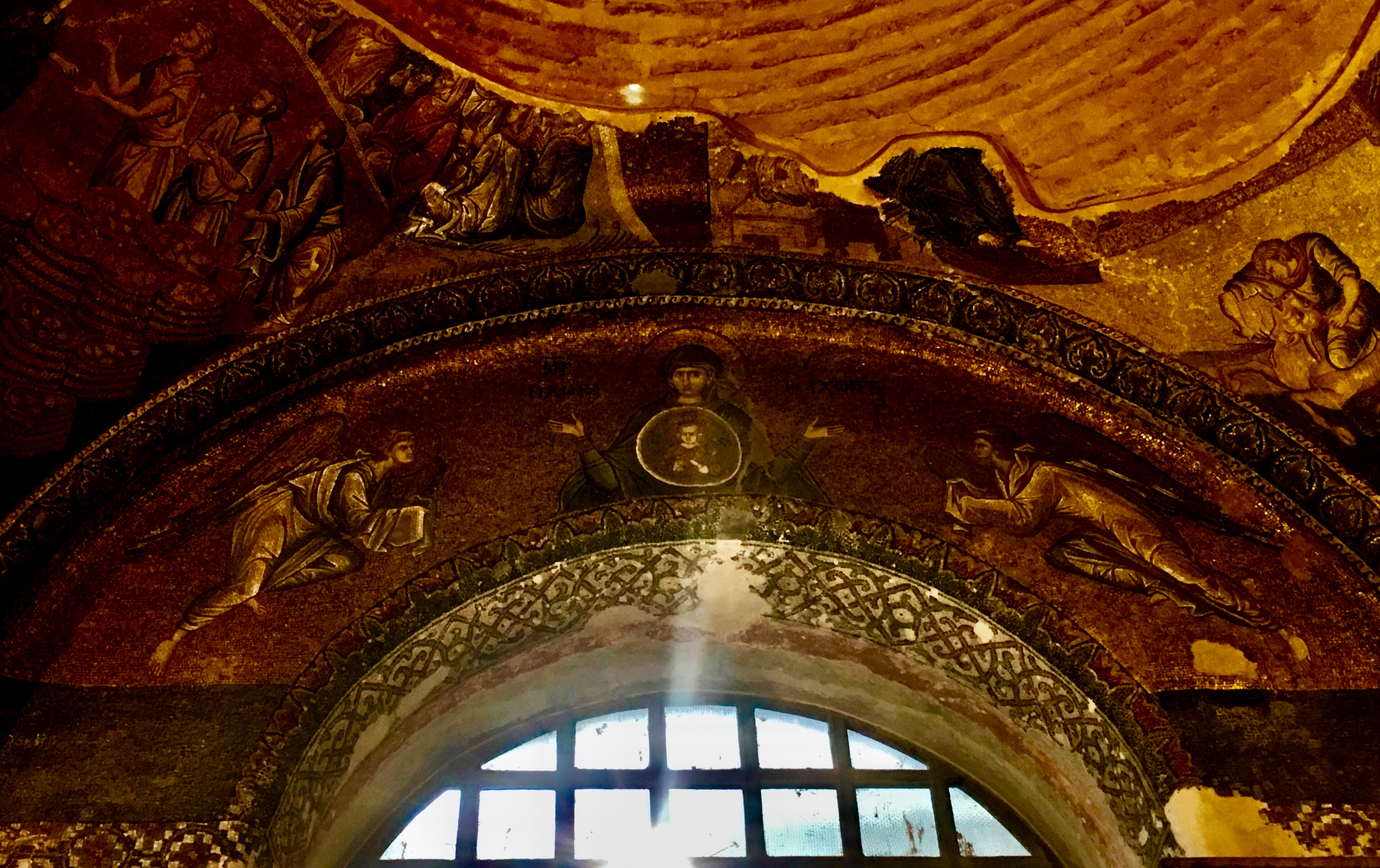
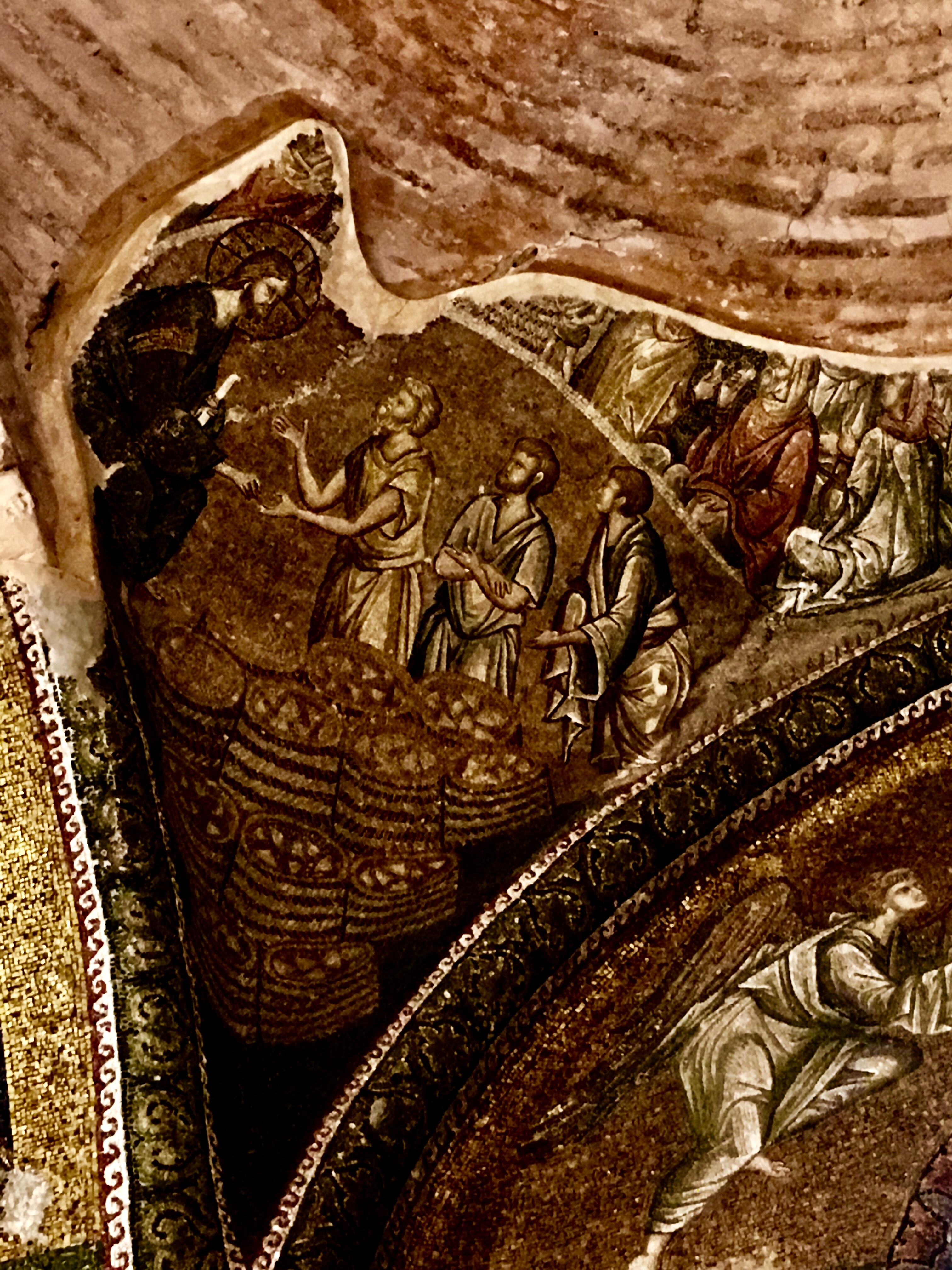
Entering the Chora by the door to the outer narthex, you immediately encounter the mosaic of Christ Pantocrator (Almighty), to whom the church is first dedicated to, in the lunette above the door to the inner narthex. The inscription is stated to be, “Jesus Christ, the land (country, dwelling- place) of the Living”. This is a play on the name of the church, Chora, that was no longer in the countryside and a reference to Psalm 116:9 “I will walk before the Lord in the land of the living.”
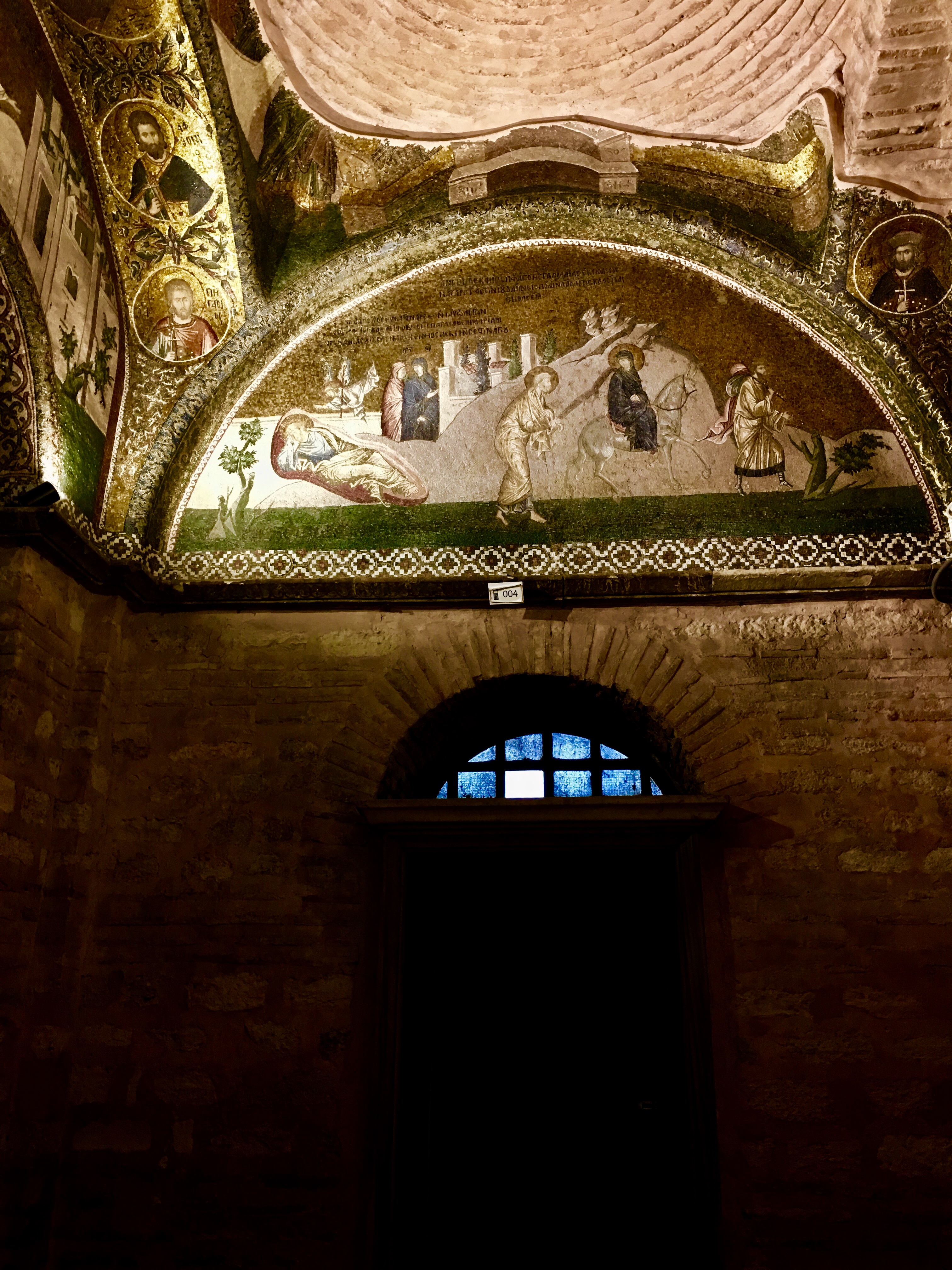
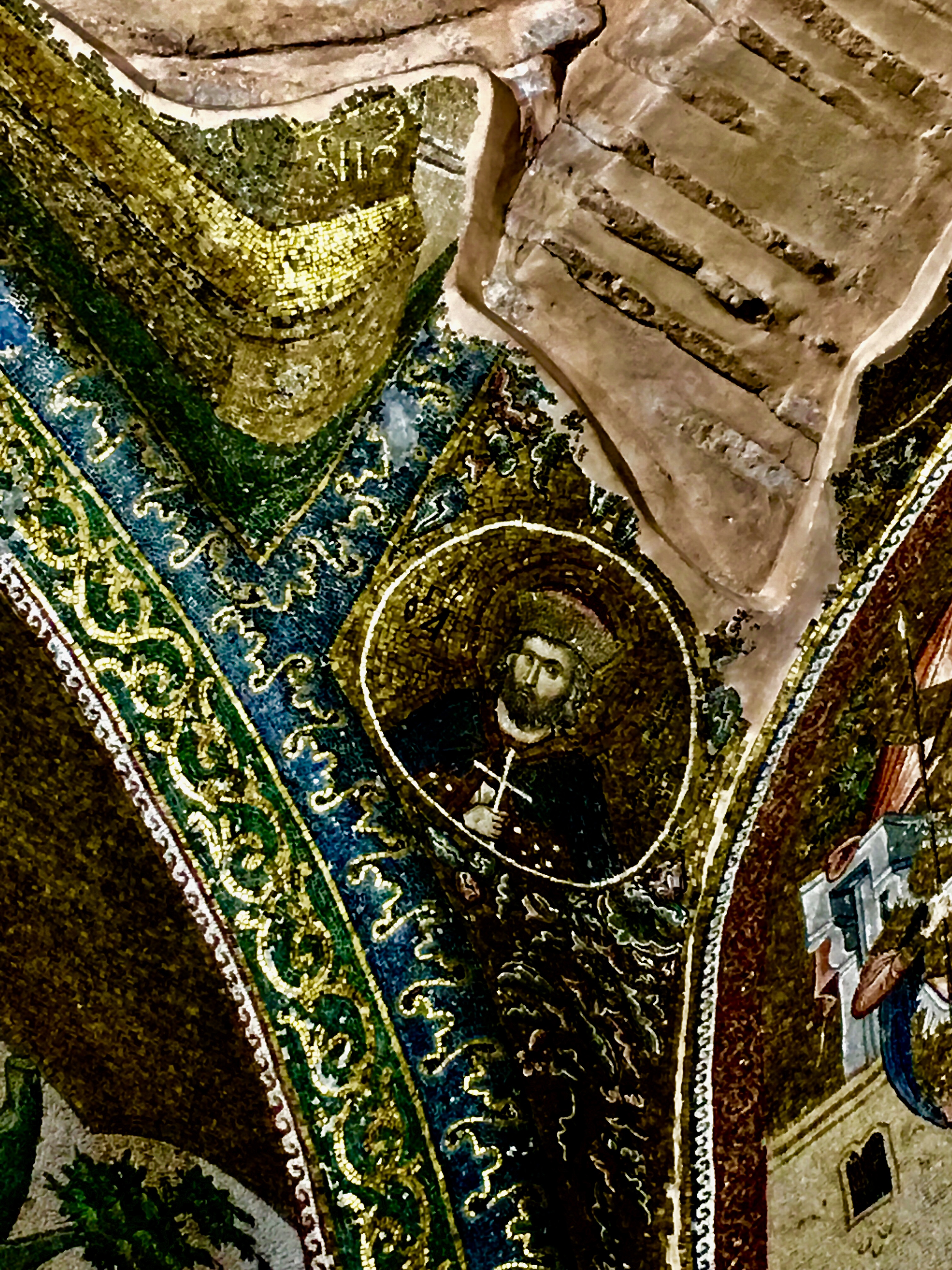
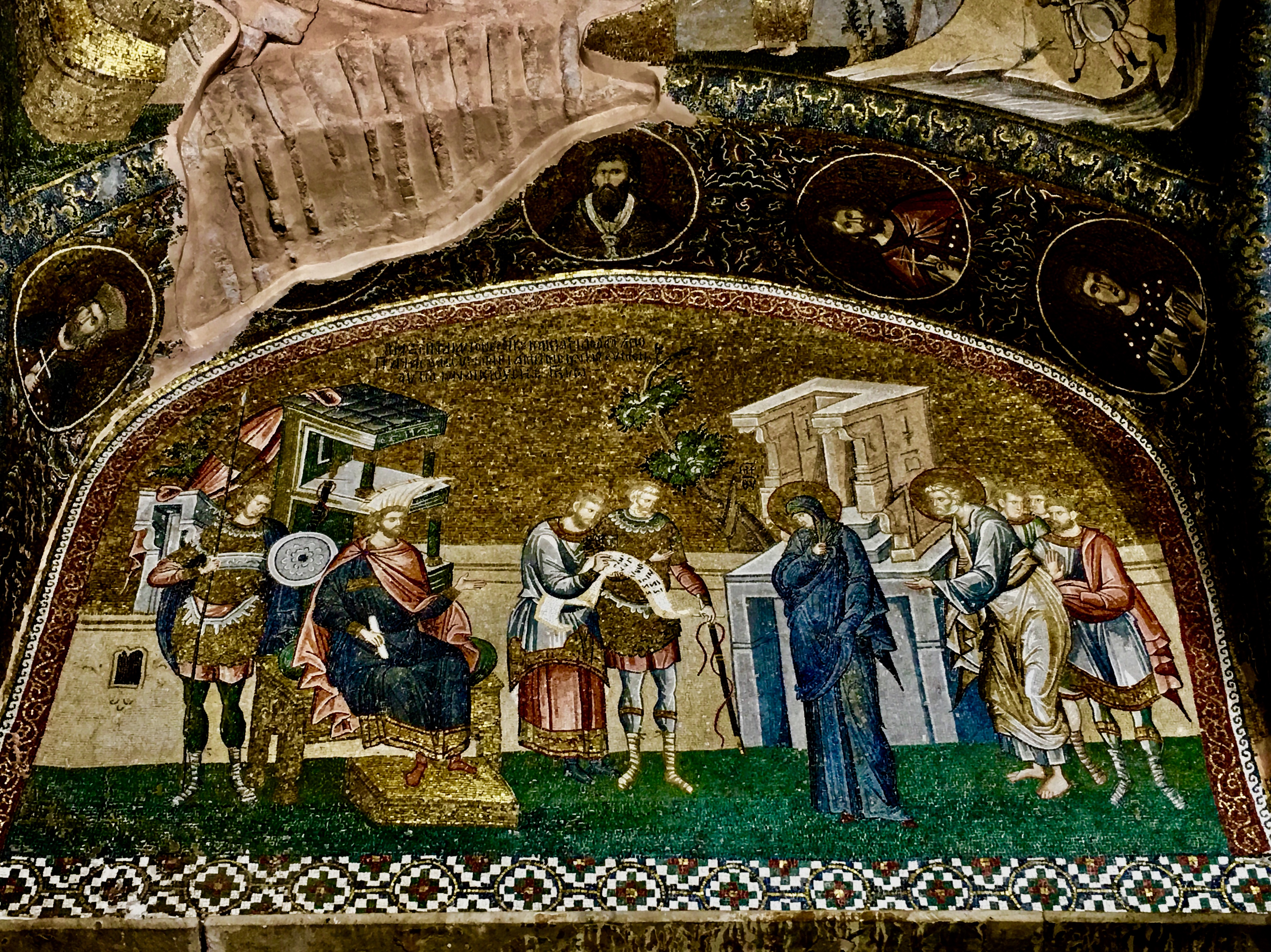
When the Roman Emperor Augustus decrees a census across the imperial lands, Joseph takes his fiance Mary from Nazereth and goes to Bethlehem. Cyrenius, the governor of Syria, is seated on a throne. The Virgin is being enrolled while Joseph is next to her. Behind him, we see his four sons.
Turning around and facing the door you have entered through, above the door there is the mosaic of the Virgin with Angels. The church was secondly dedicated to the Blessed Virgin. Here we see her praying with open hands and child Jesus in her bosom. The inscription reads, “The Mother of God, the dwelling-place of the uncontainable.” Likewise, here there is a play on the name of the church and a reference to the mystery of the Incarnation.
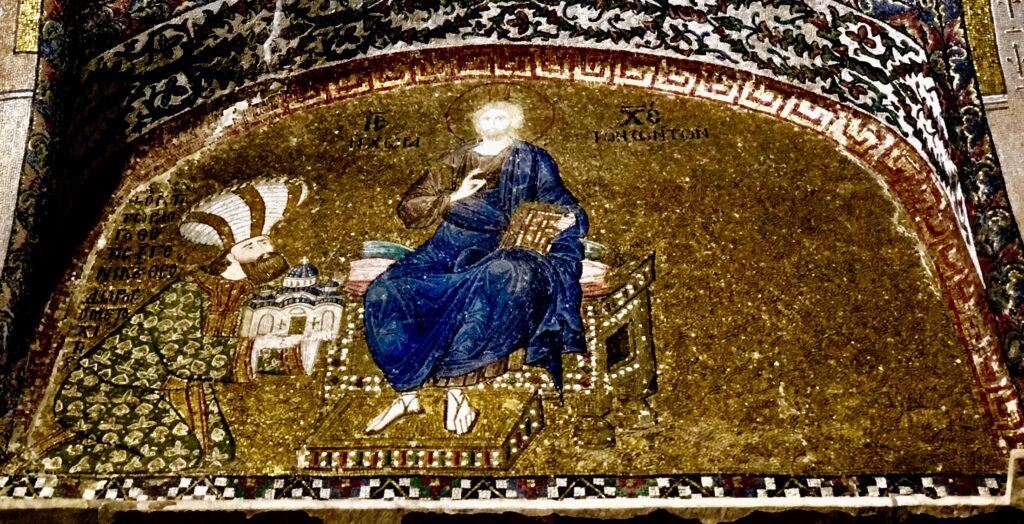
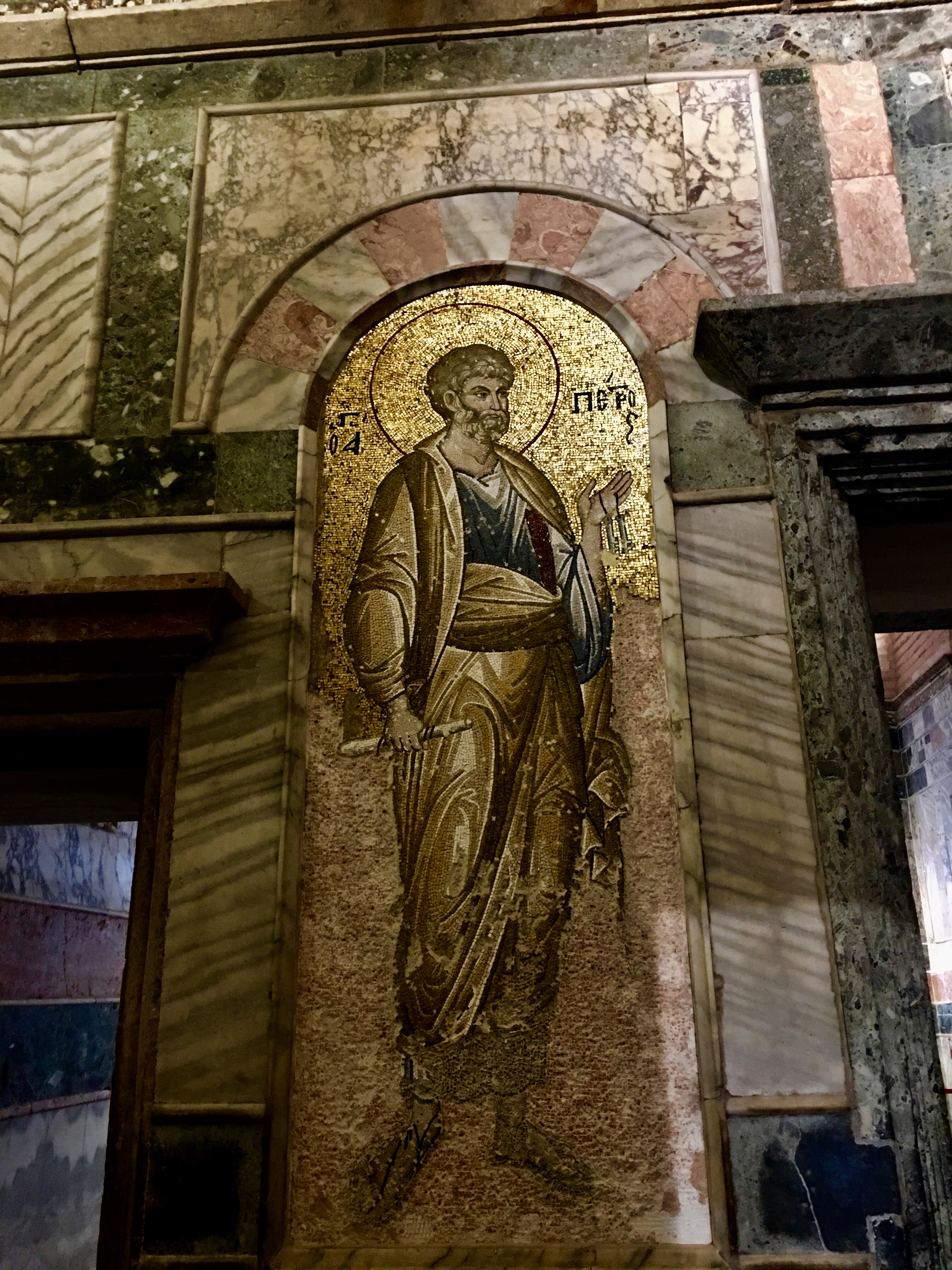
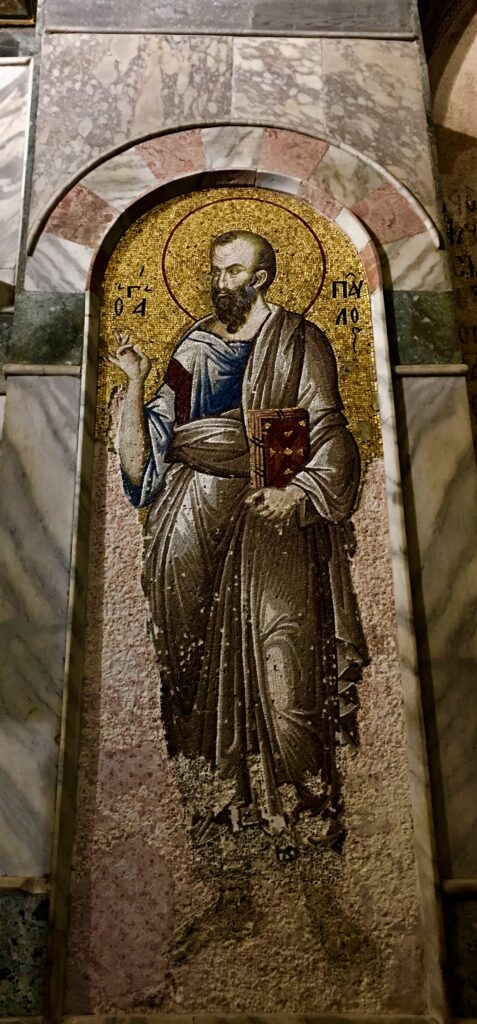
On the farthest wall of the left side of the outer narthex, there is the beautiful depiction of Virgin Mary’s visit to Bethlehem. Joseph and Mary are engaged but Mary is already pregnant. Being greatly upset, Joseph considers leaving his future bride and falls asleep. An angel appears in his sleep and reveals him the divine secret that the child is conceived from God Almighty. Joseph is advised not to leave Mary and to name the boy to be born as Jesus. The birth of Jesus is also to be found in the same section, to the left of the door leading to the inner narthex.
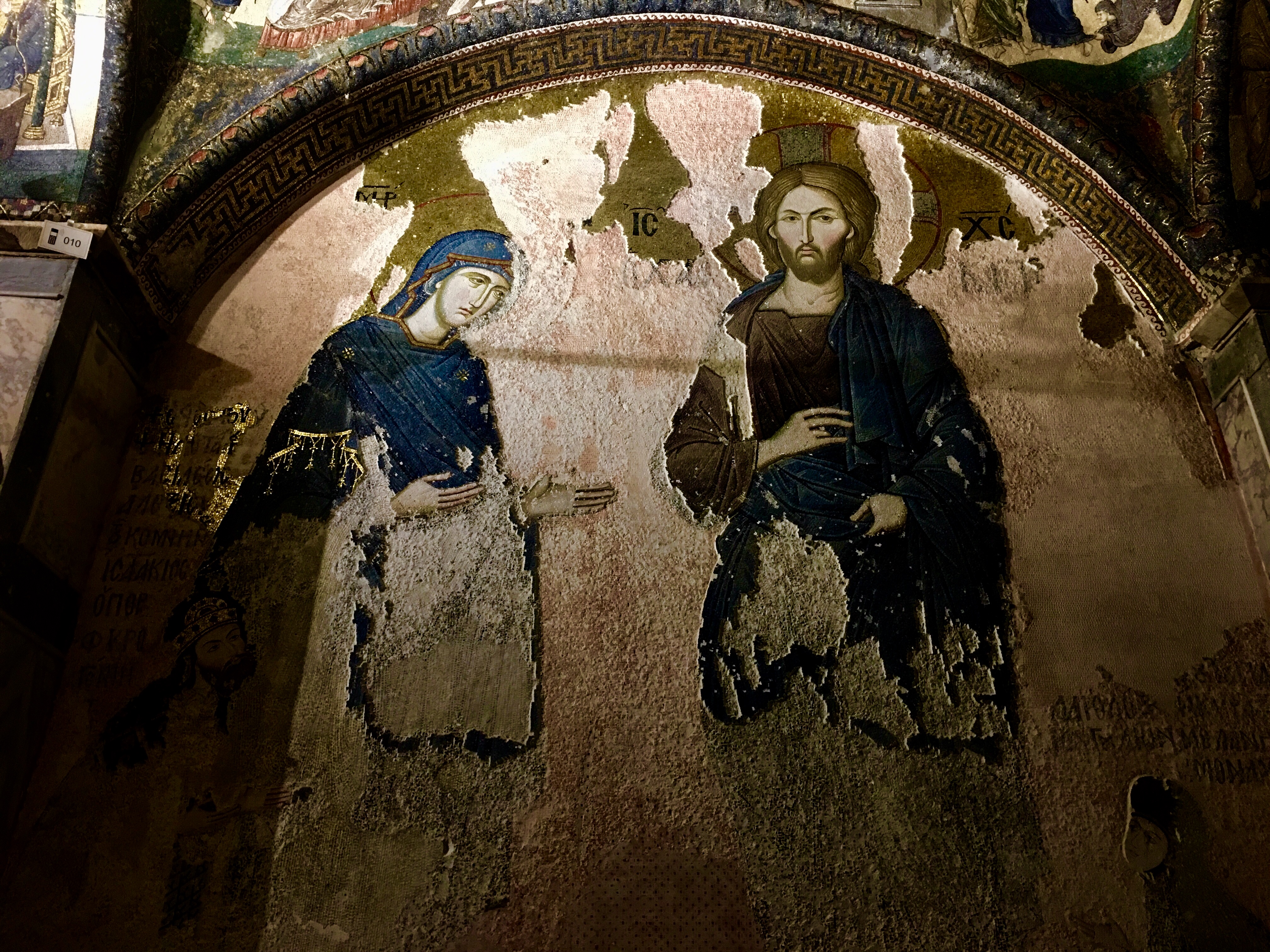
Jesus was named as Khalke in this mosaic because it was inspired by a large size icon found at the entrance to the Khalke Palace in Byzantium.
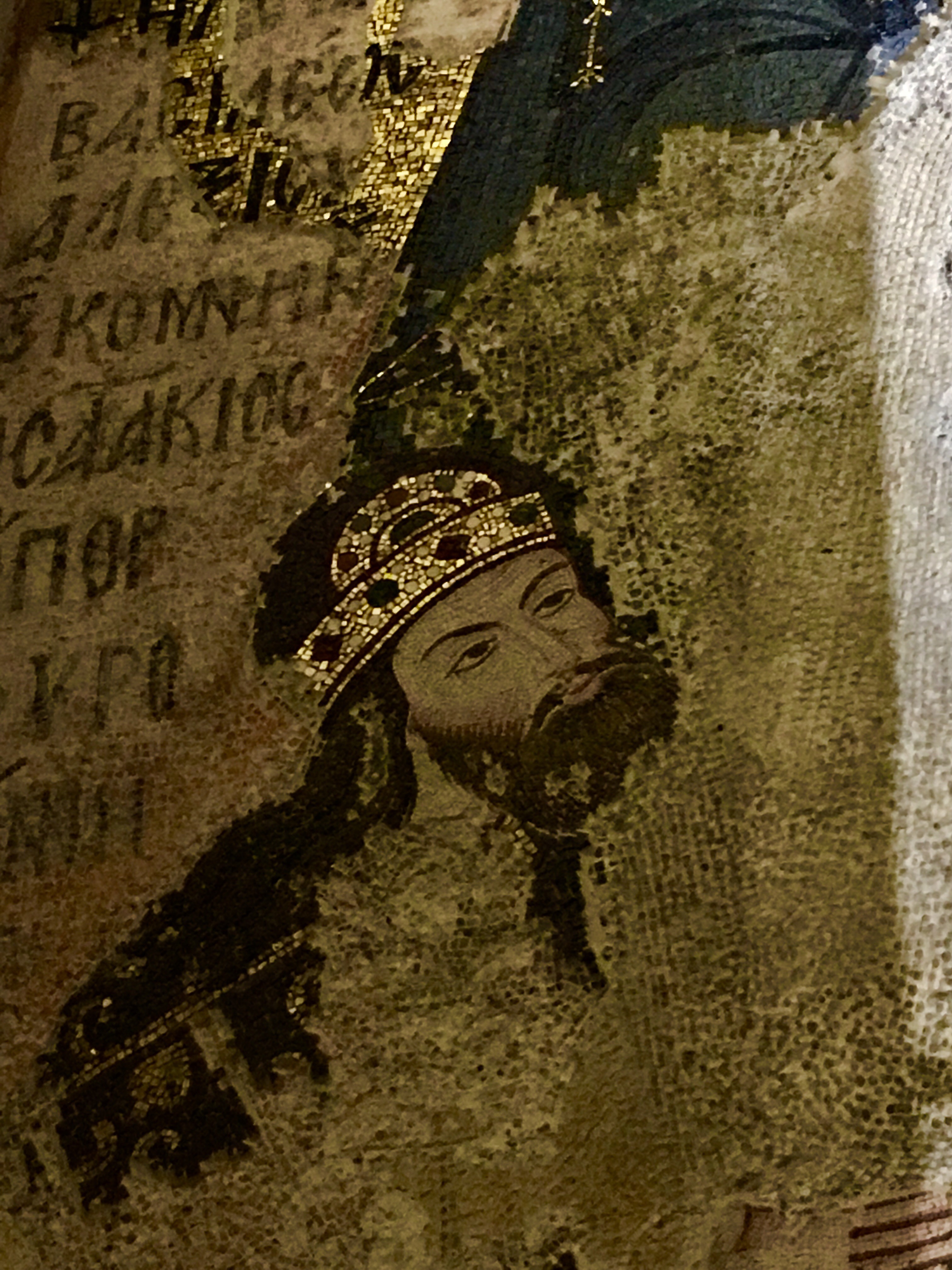
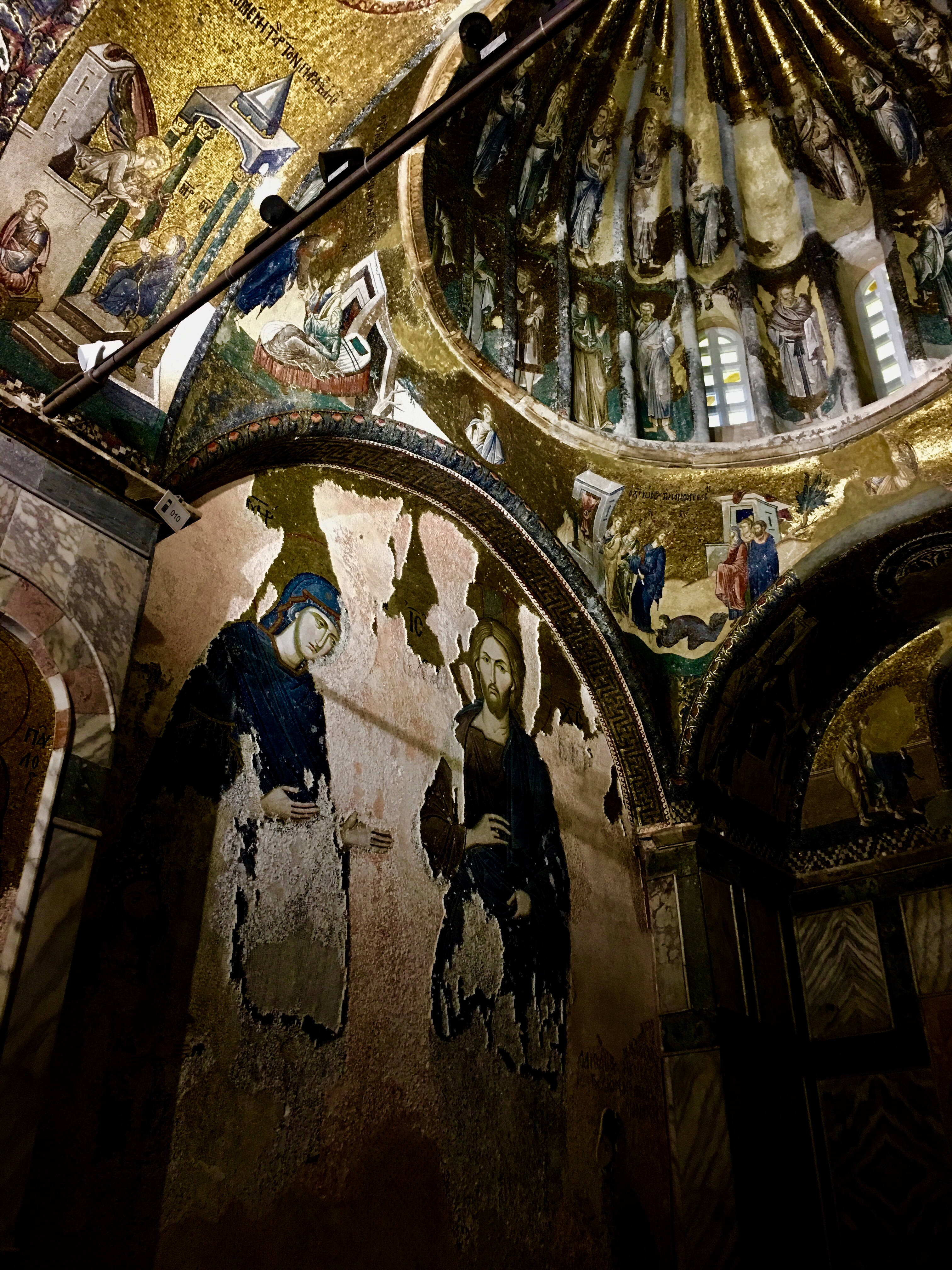
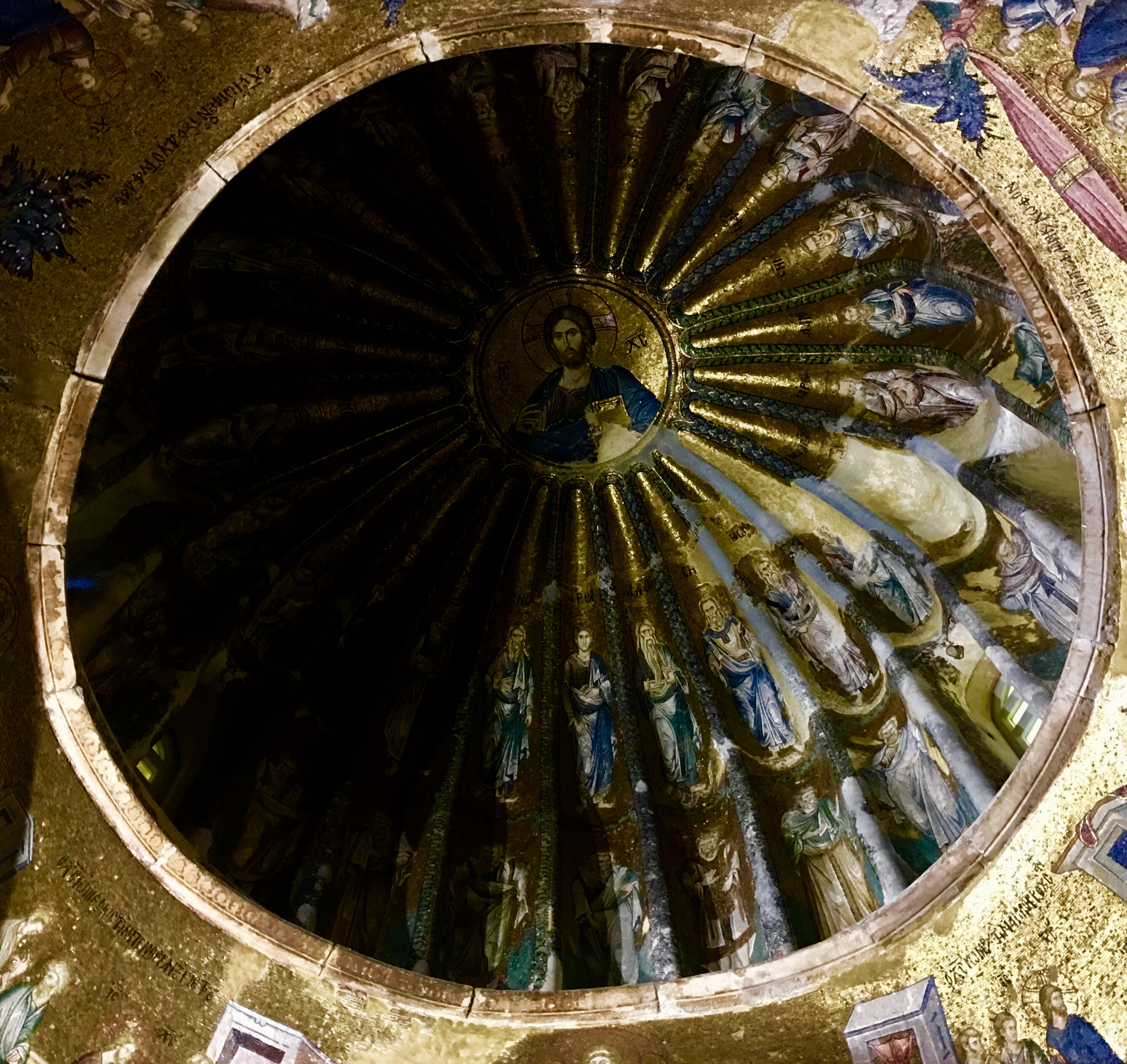
In the lunette over the door from the inner narthex to the nave of the church, you will see Theodore Metochites, benefactor of the church, presenting his Church to Christ. He is dressed in his official attire with a turbanlike hat that is called skiadion (sunshade). The inscription for Theodore reads, “ The Founder, Logothete of the Genikon, Theodore Metochites,” meaning he was in charge of the ‘general finance ministry.’ Below, on two sides of the same door there are the mosaics of St. Peter (on the left) and St. Paul (on the right).
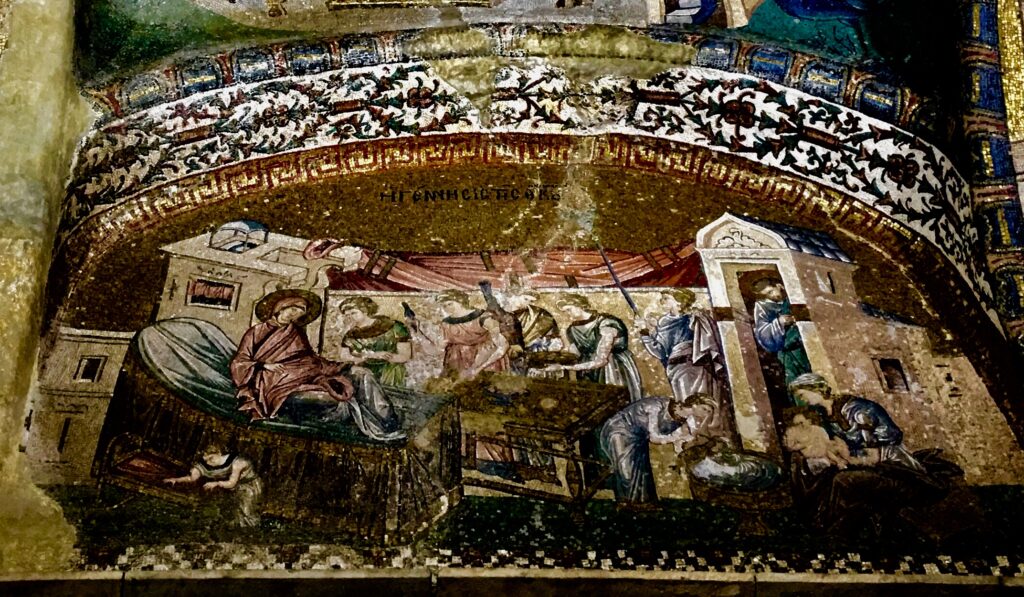
Her father Joachim is in the doorway, watching the scene. Her mother Anne is lying in bed.
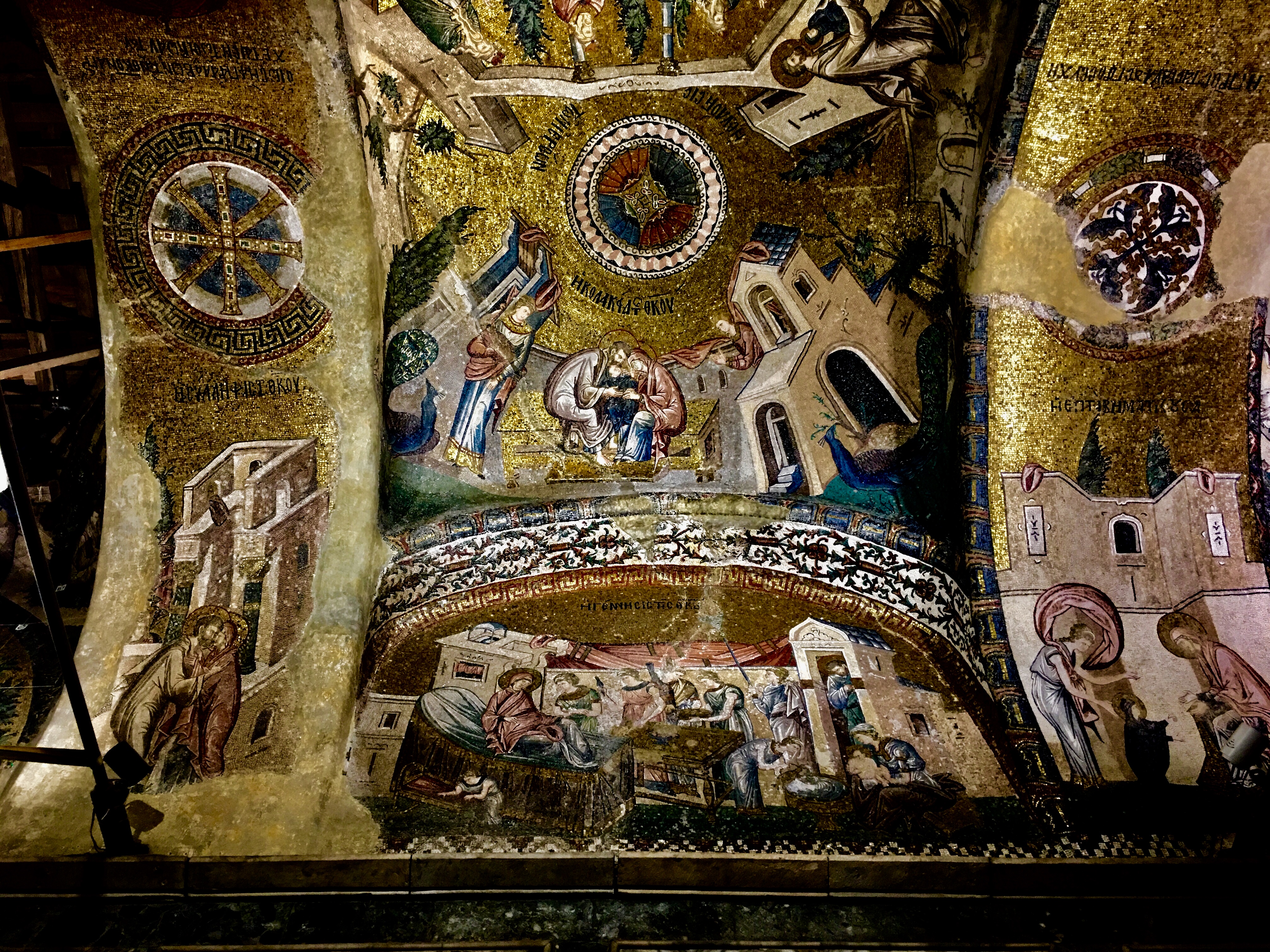
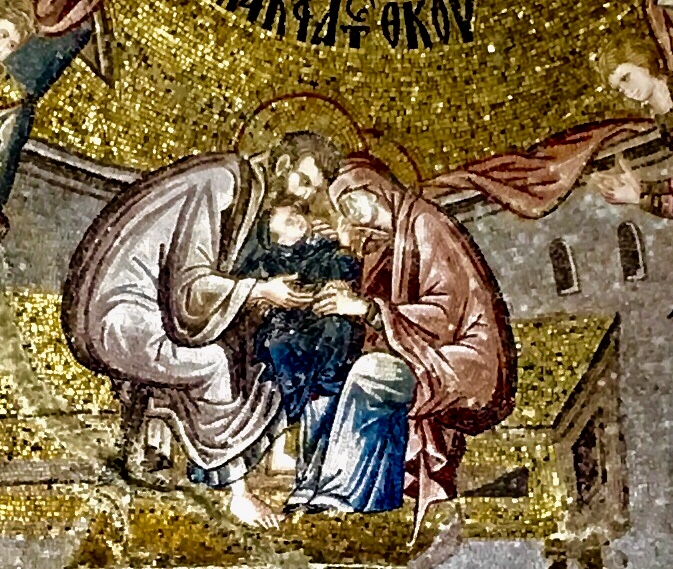
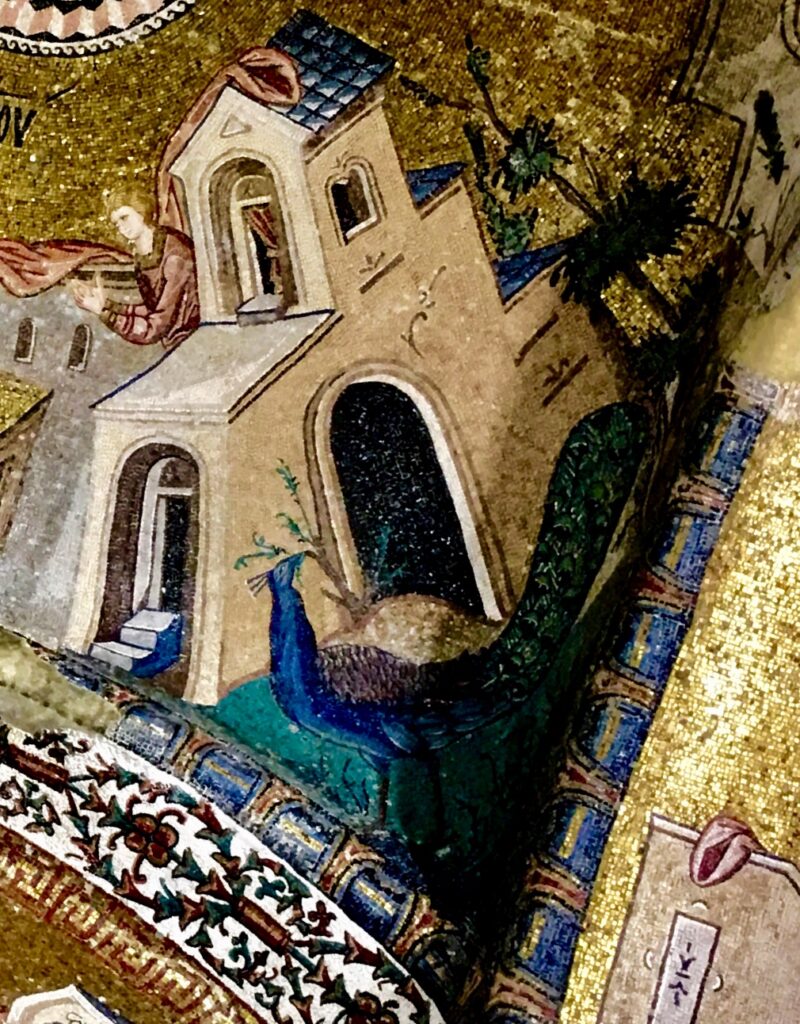
The mosaic of the Khalke Jesus and Mary is a big mosaic in the inner narthex. In some sources it is also called the Deesis even though St. John the Baptist is not depicted here. (A Deesis is a representation of Christ with his mother on his right and St. John the Baptist on his left). Here instead, we have two figures who contributed to the well-being of the church in the 12th century. The one by the Virgin Mary is the previously mentioned Sebastokrator Isaac Comnenus and the woman by Jesus Christ is St. Mary of the Mongols who was a Byzantine princess. She was the half-sister of Andronikos II and was married off to a Mongol Khan. Following her husband’s death, she returned home, took the religious name Melane and became a nun.
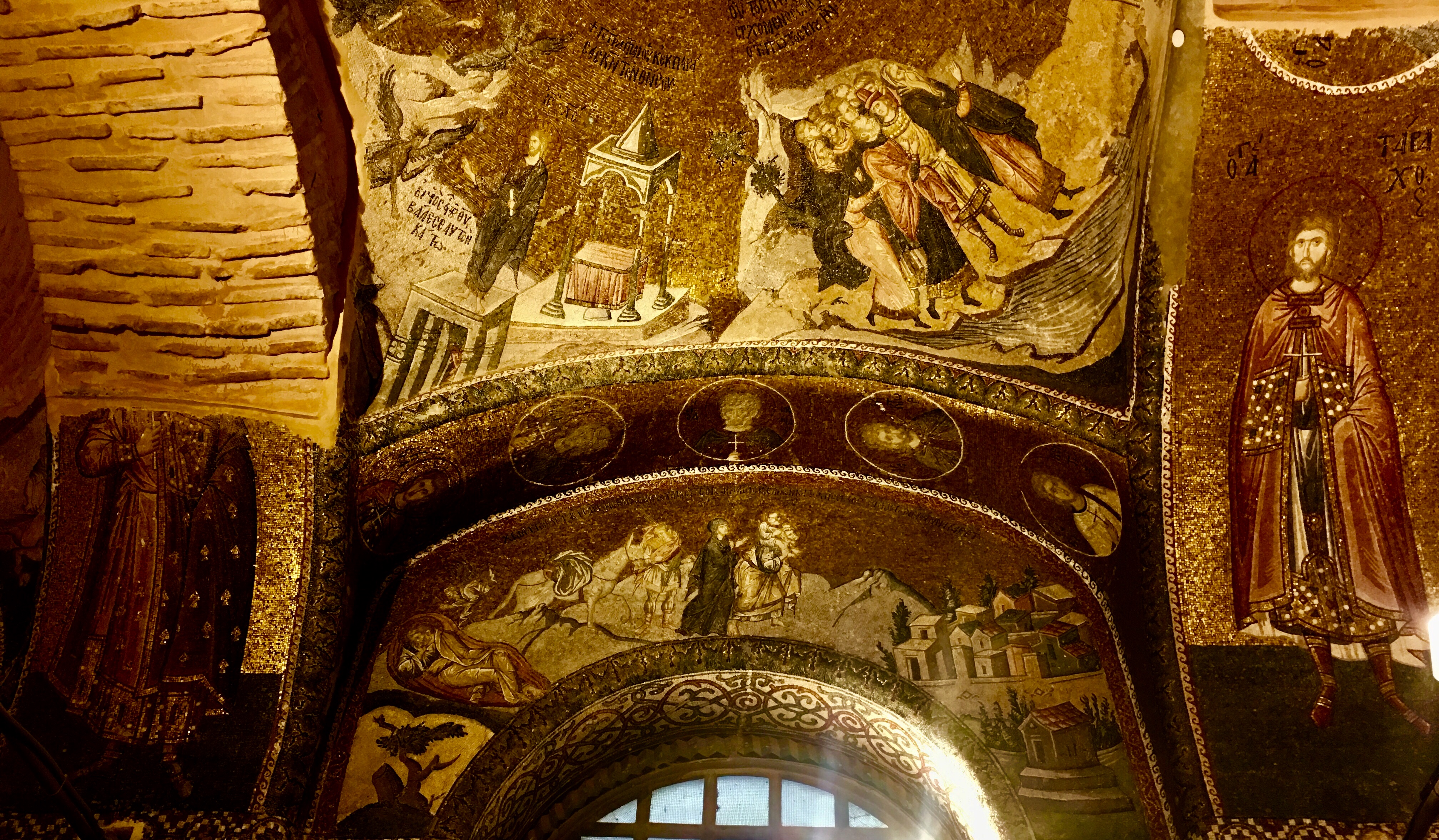
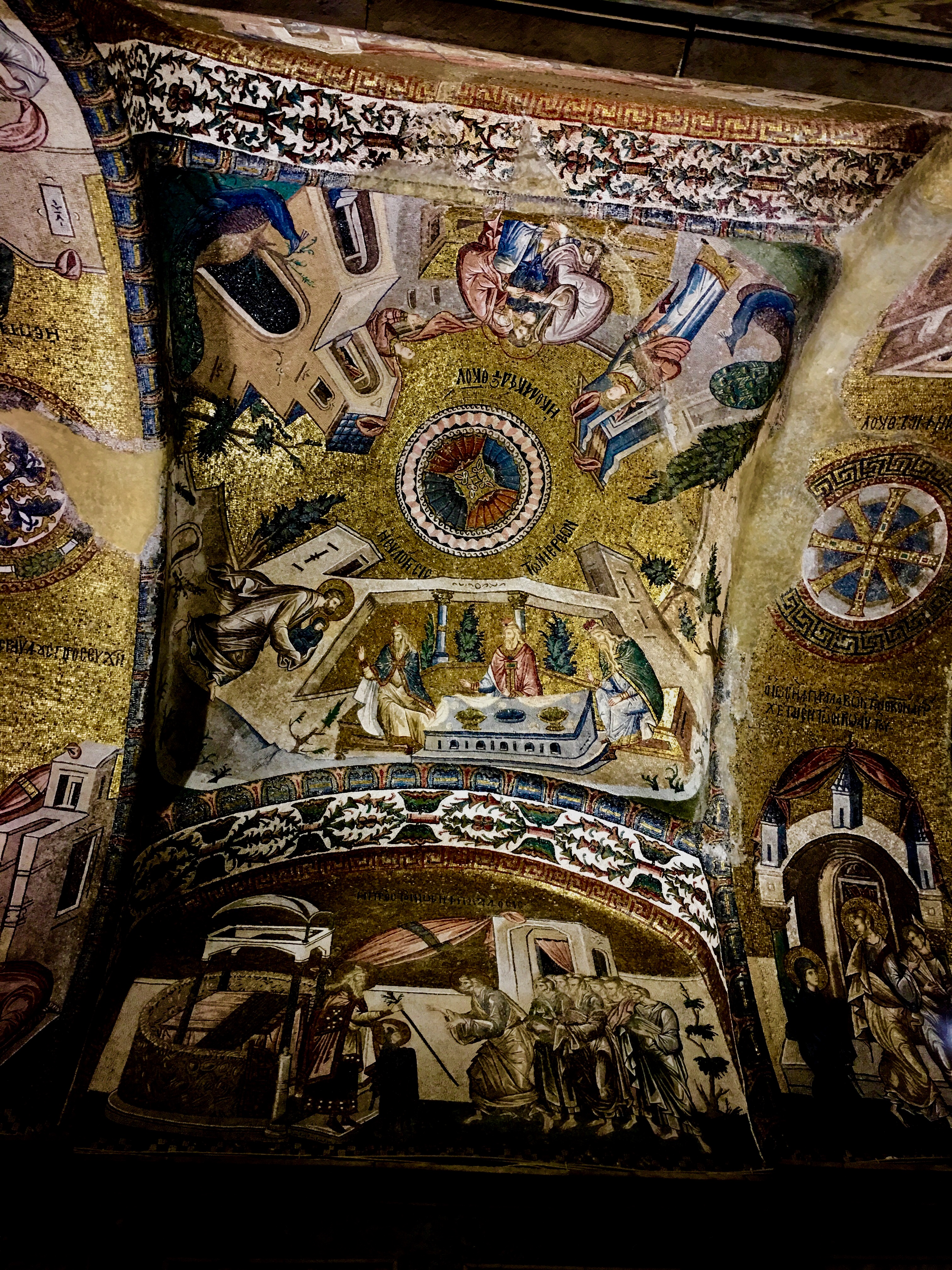
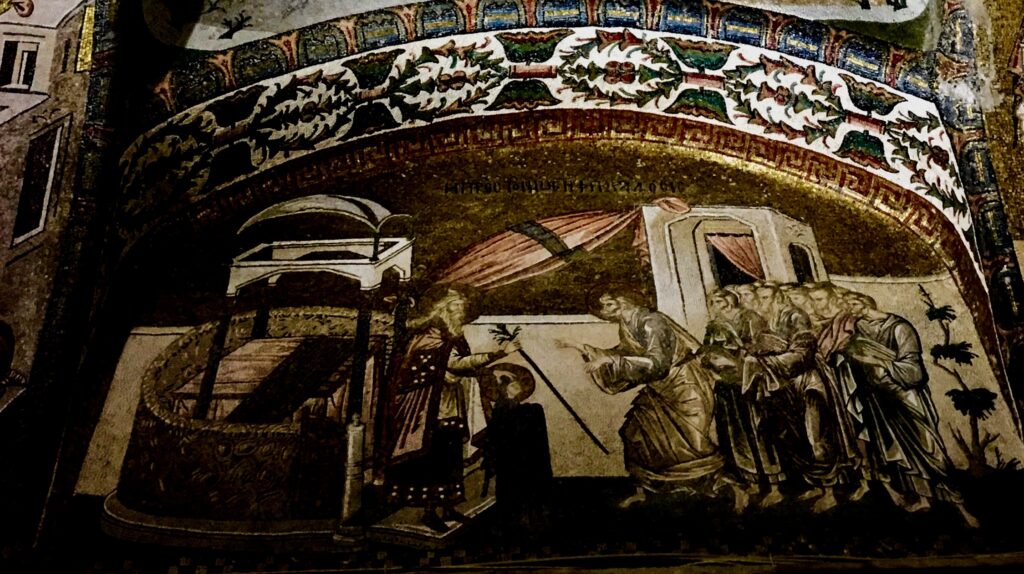
The two domes in the inner narthex depict two genealogies. In the southern dome, Christ is at the centre medallion from where two rows of his ancestors, starting from Adam to Jacob and his sons, radiate out. In the northern dome, we see the Virgin Mary with her ancestors including the sixteen kings of the house of David in the upper row.
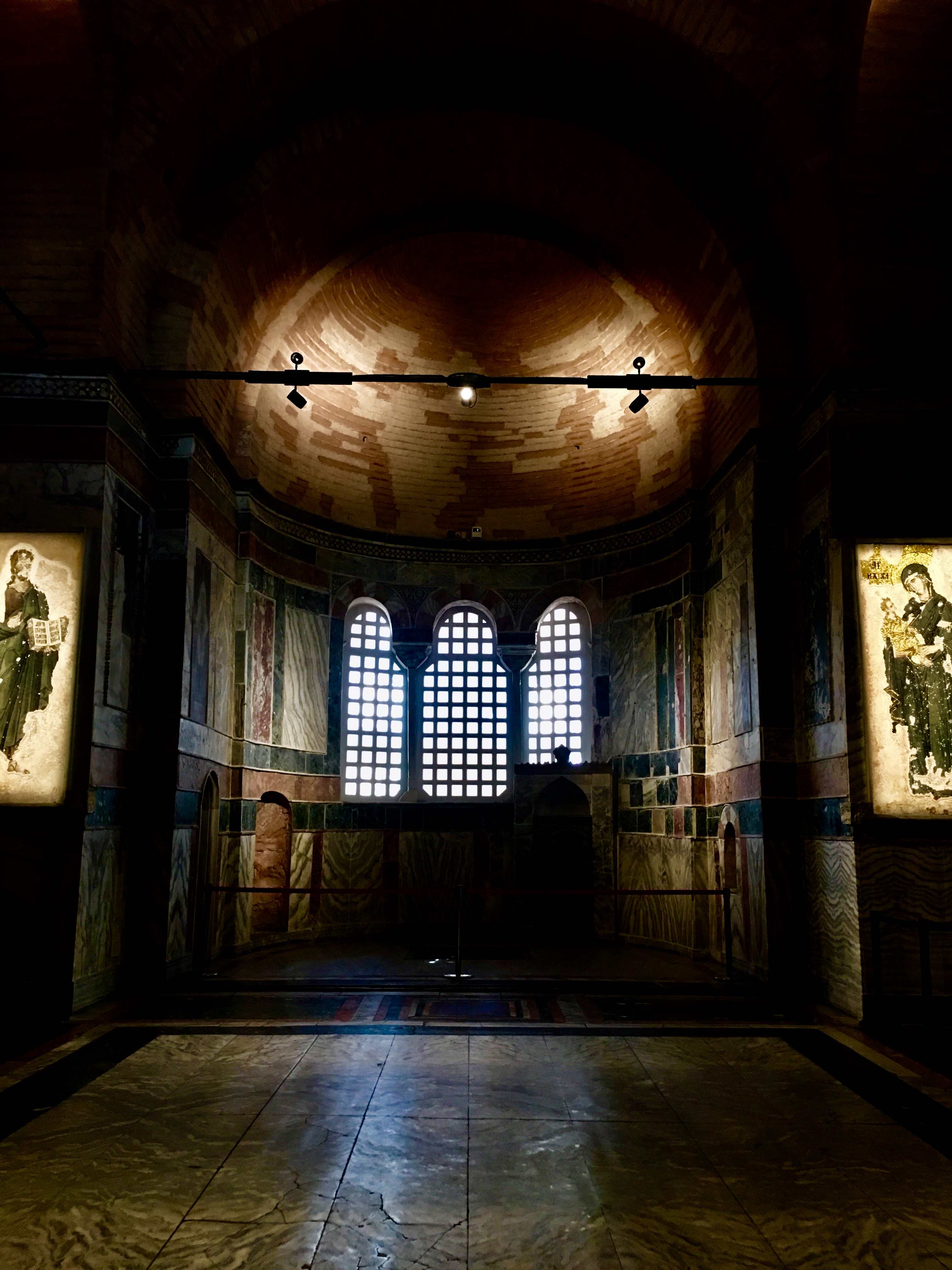
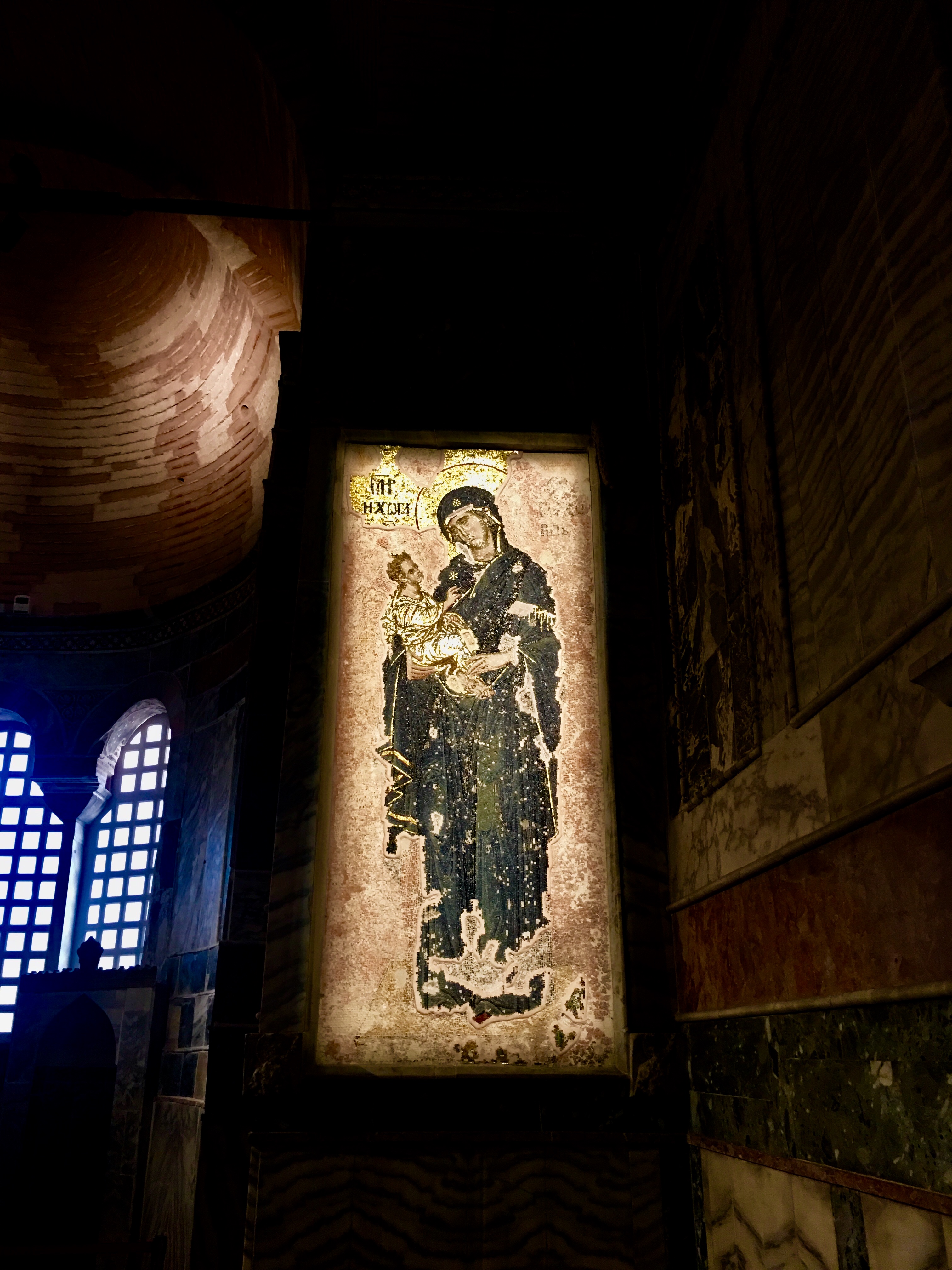
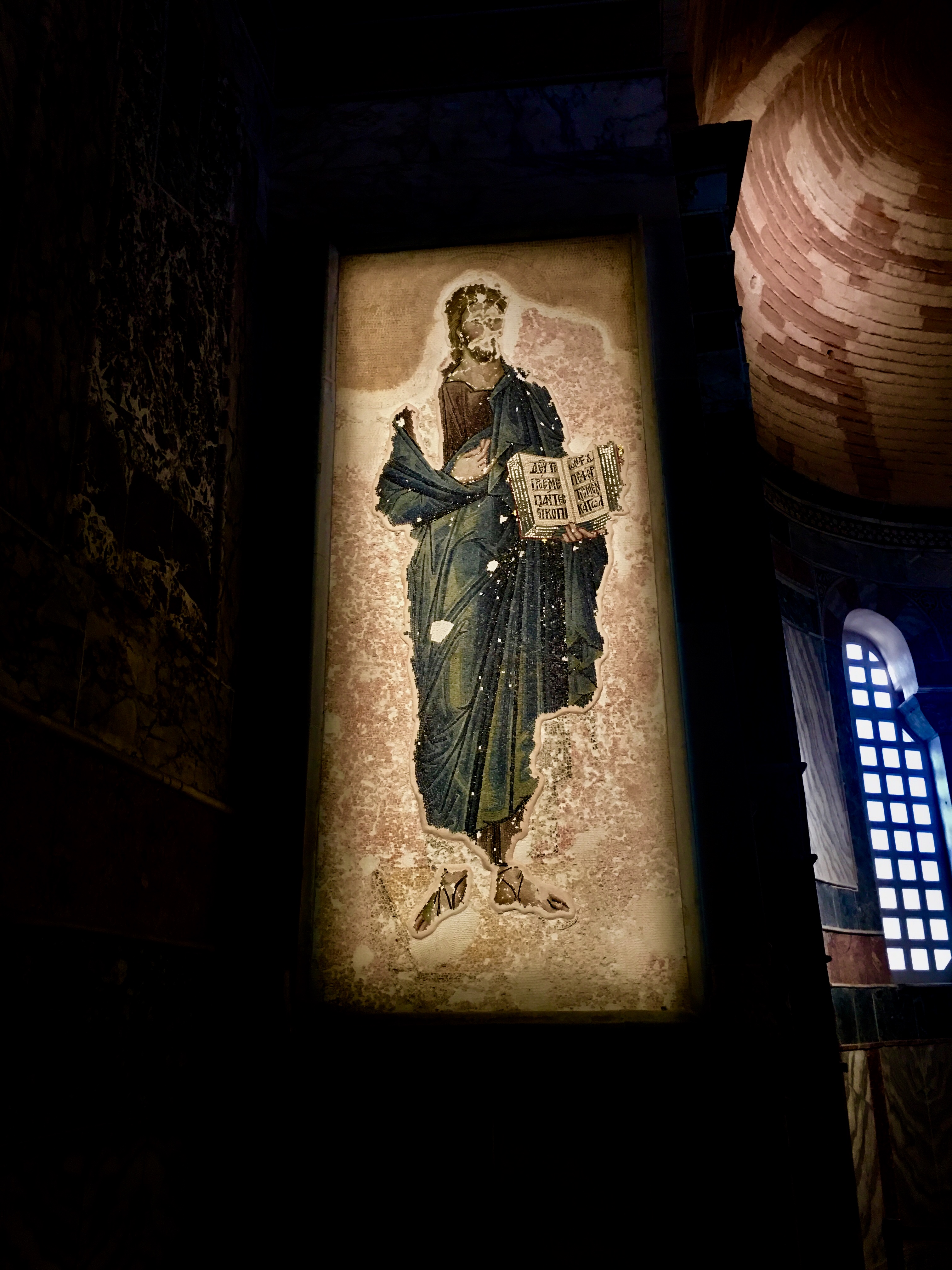
The inner narthex is also the location where scenes from the life of Mary are depicted. The mosaics start with stories well before Mary was conceived by her mother Anne. Some of them are, Arcangel Gabriel bringing Anne the good news while Mary’s father Joachim is praying for a child for forty days and nights up on the mountain. Depictions of Mary’s birth, her first seven steps (when she was six months old), her presentation to the Temple, her engagement to Joseph and Joseph taking her to his house are some of the scenes from her life before the birth of Jesus.
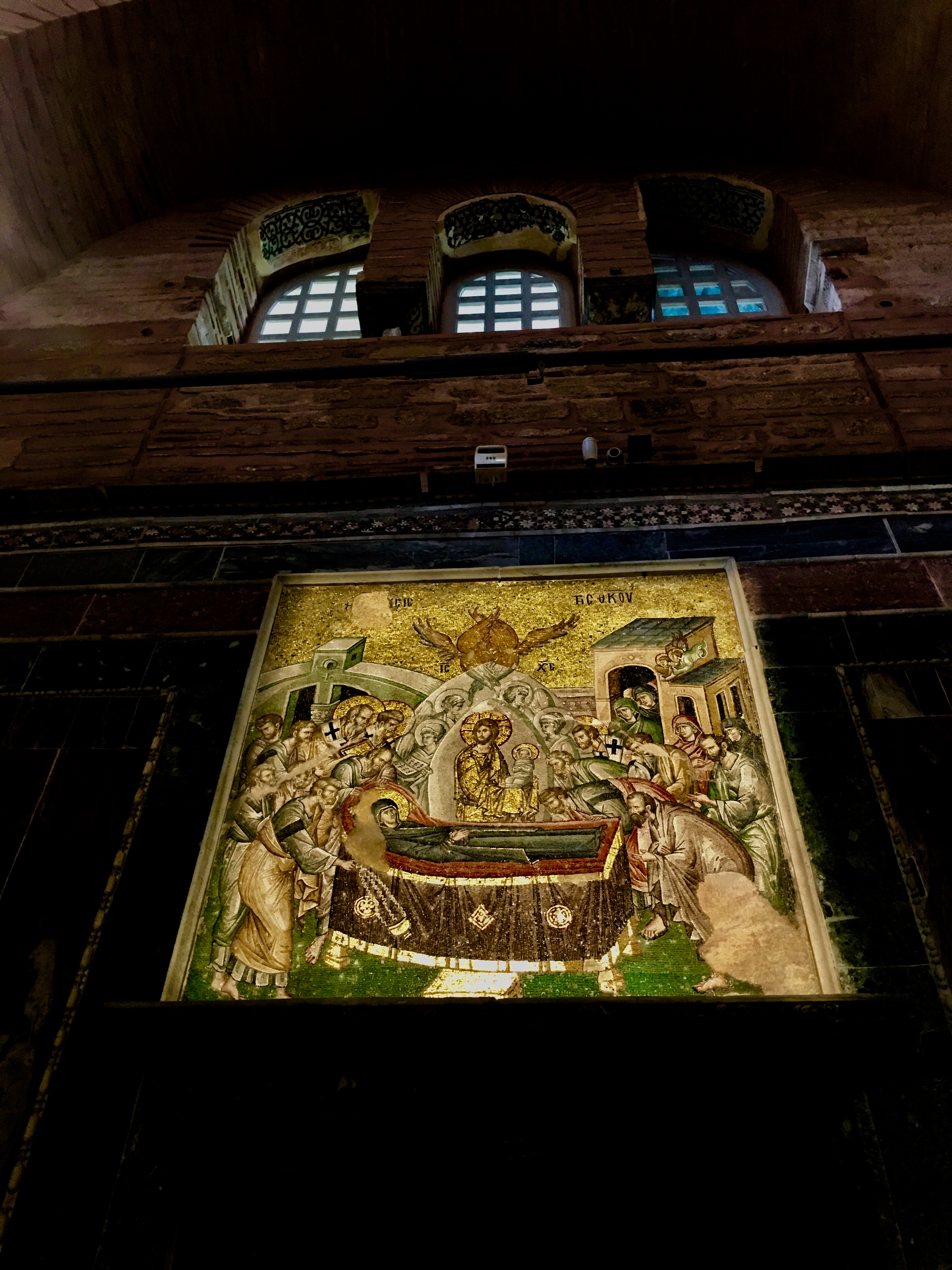
The scene of the death of the Virgin Mary is inside the nave of the church, right above the main doorway. This section of the temple is actually quite plain compared with the narthexes and the Parecclesion. On the left of the apse, there is the mosaic of Jesus holding a bible in his hand while on the right-hand side we see Mary and the child Jesus. These three are the only mosaic panels in the nave.
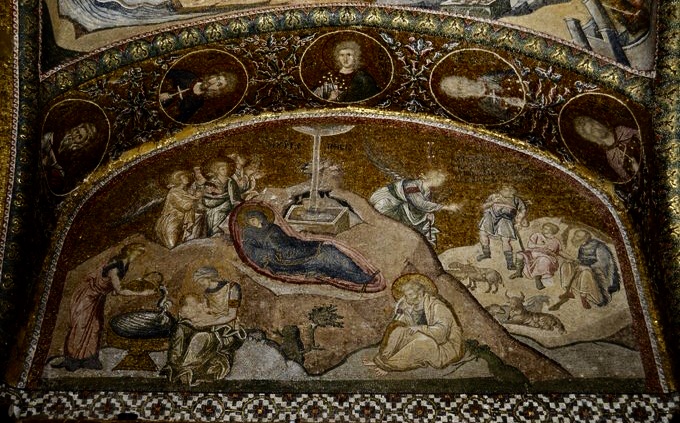
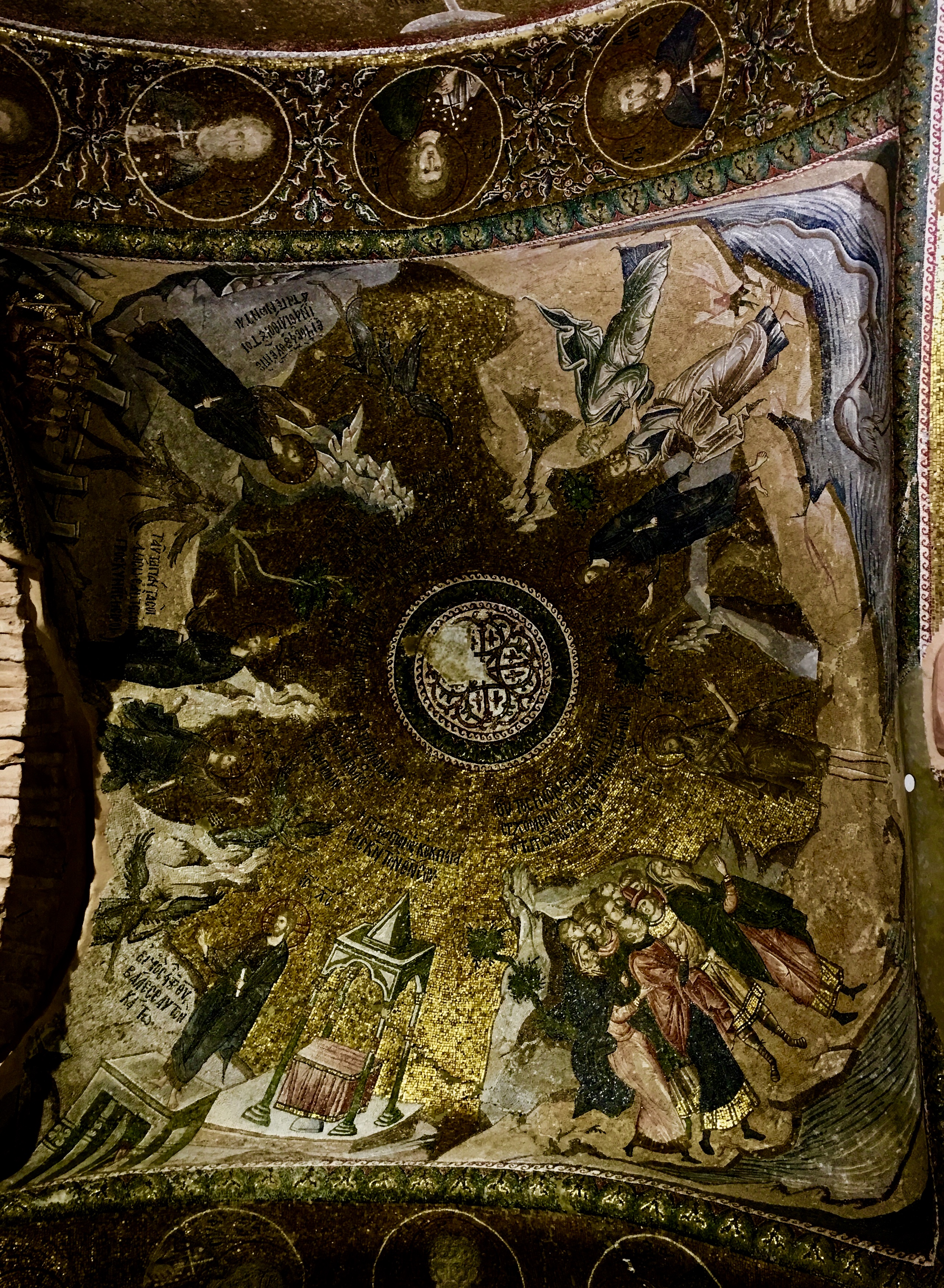
This mosaic on the ceiling of the north side of the outer narthex depicts the baptism of Jesus by John the Baptist on one side. After the baptism the Holy Ghost wants to test Jesus and takes him to the desert where Jesus fasts for forty days and nights. This is when Satan approaches Jesus and attempts to deceive him in several ways.
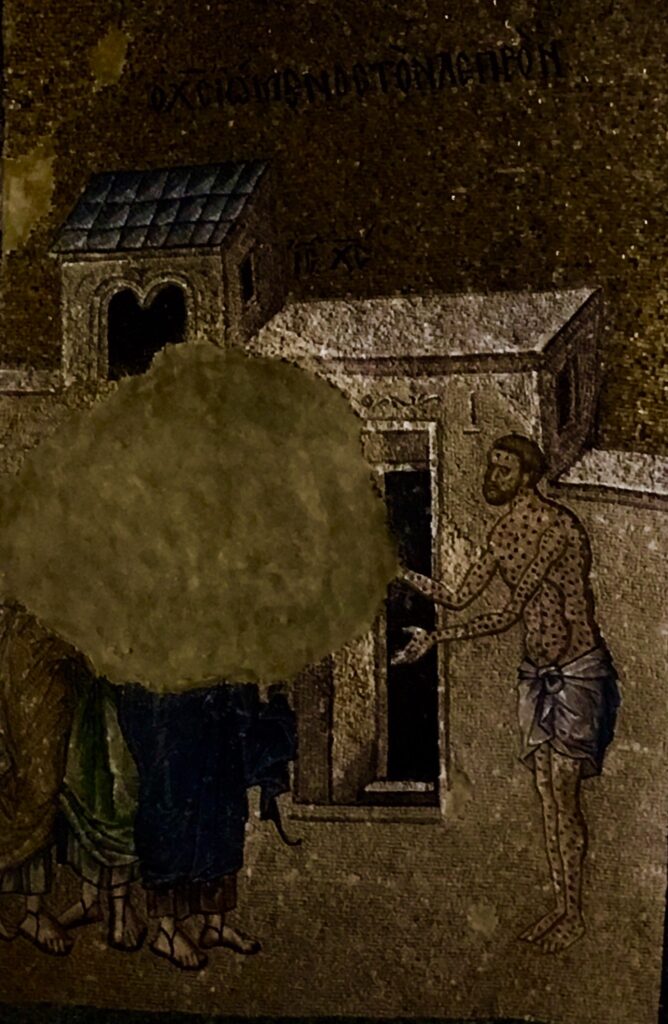
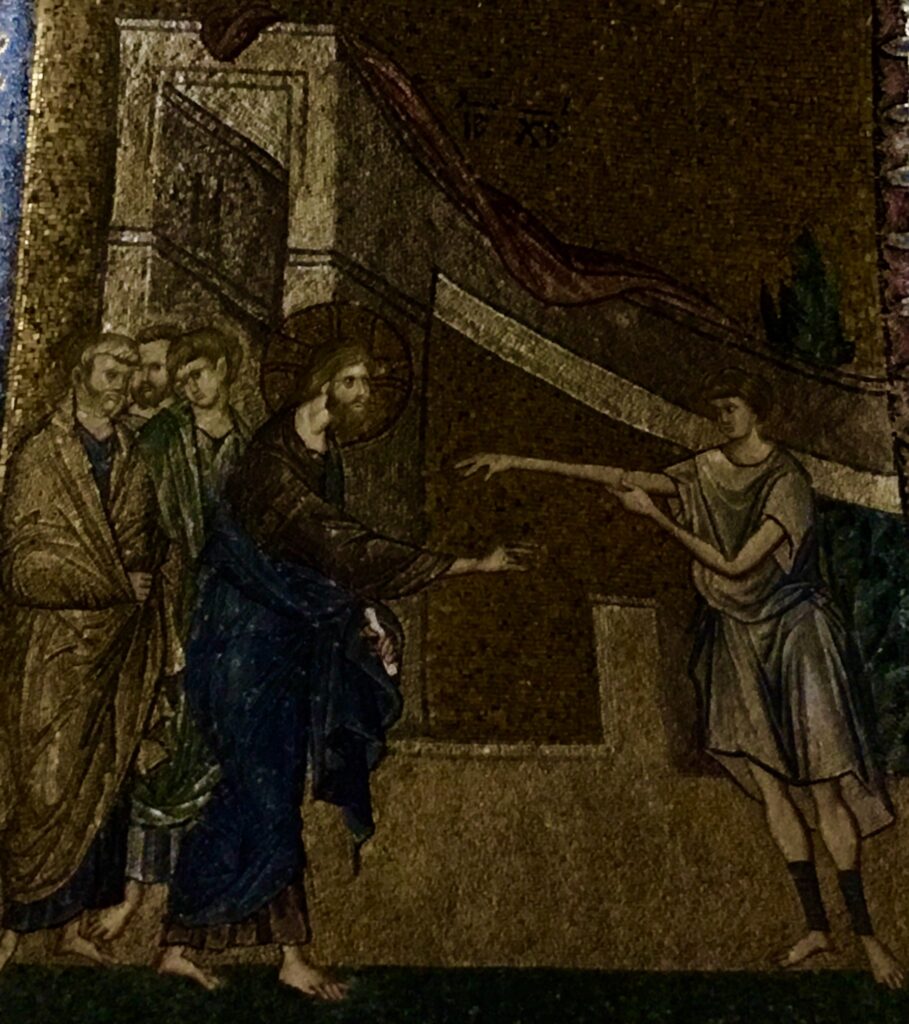
The adjoining burial chapel, the Parecclesion, can be accessed through the nave and the narthexes. This is a burial chapel and the themes of the beautiful frescoes in this area are in harmony with this purpose. The master artist of these frescoes is thought to be the same as the one who did the mosaics in the other parts of the church. They were probably made in1320-1321. In this section, there are four grave niches. It is stated that, the first tomb on the left, in the north wall, almost certainly belongs to Metochites, the benefactor of the church.
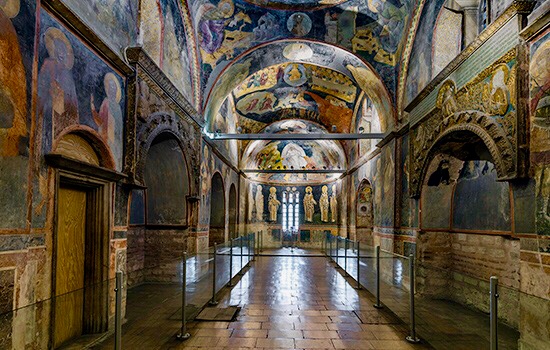
Source: churchofchora.com/
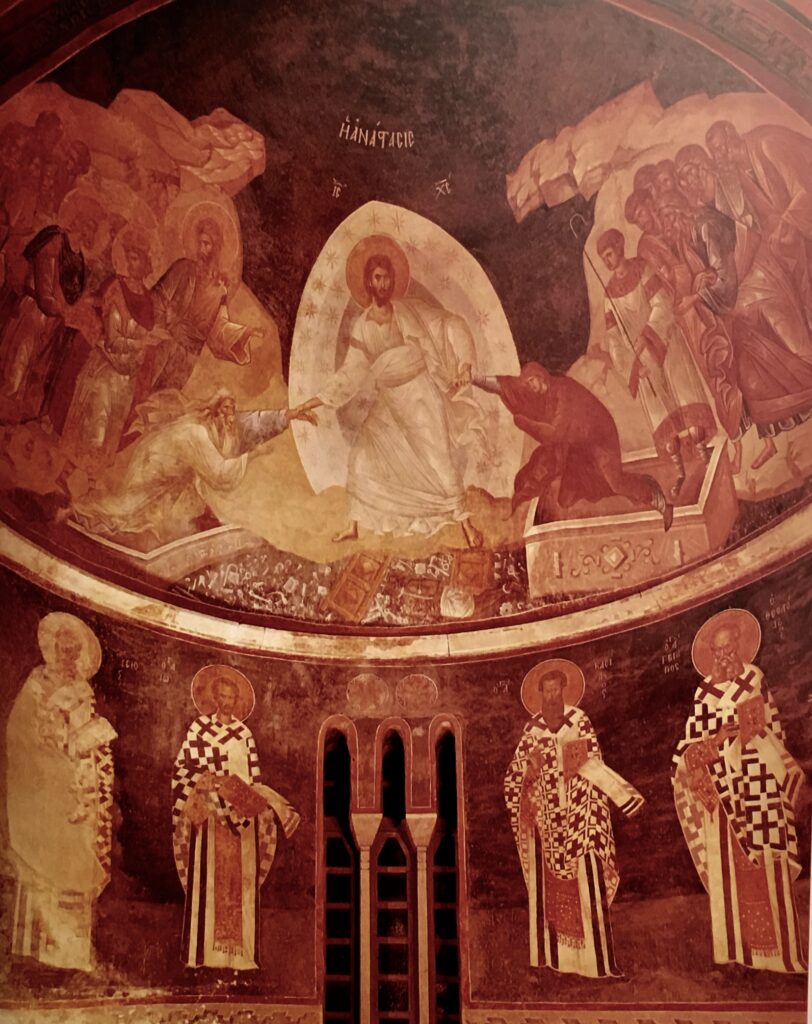
Source: Akşit, İ., The Museum of Chora, Mosaics and Frescoes
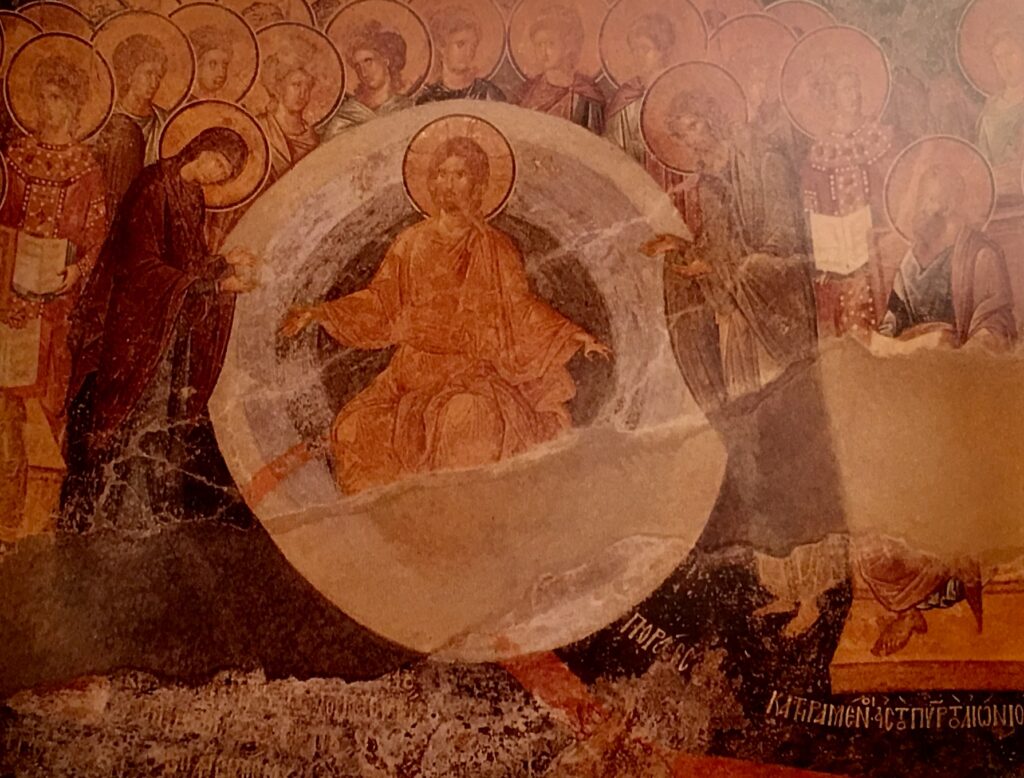
Source: Akşit, İ., The Museum of Chora, Mosaics and Frescoes
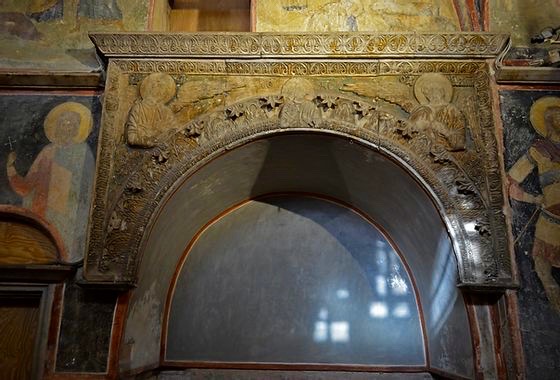
Source: thebyzantinelegacy.com
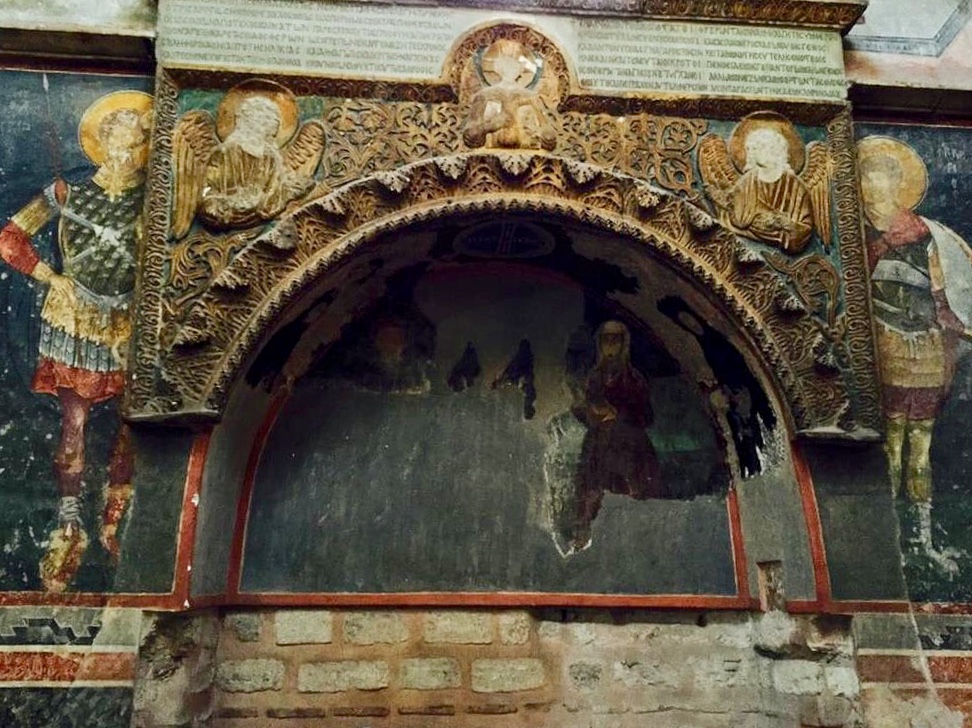
A general and friend of Metochites
Source: thebyzantinelegacy.com
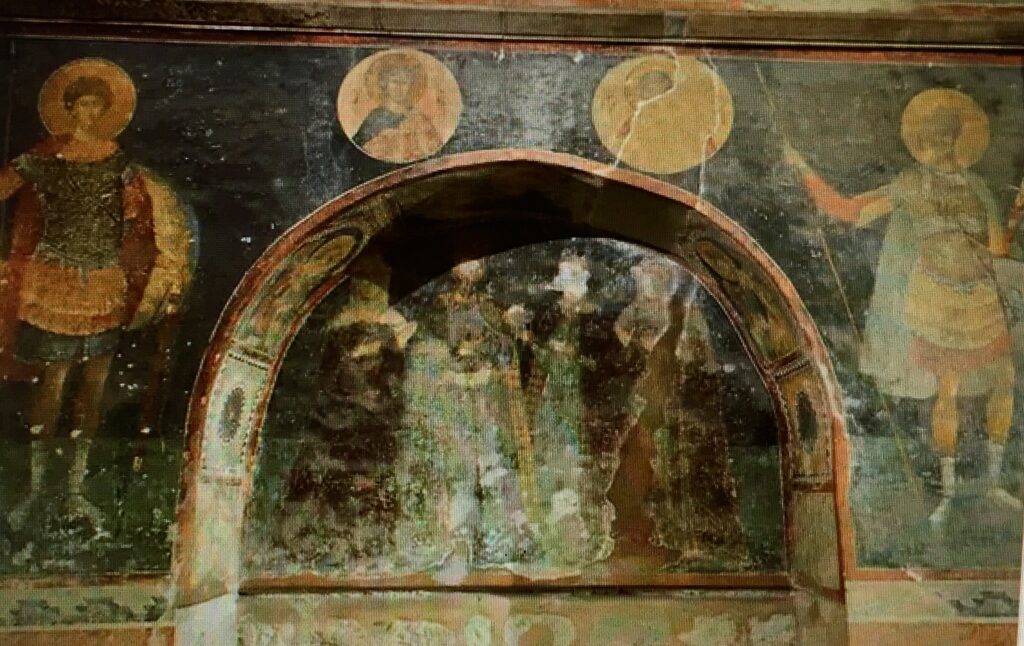
Source: thebyzantinelegacy.com
Apart from the four tombs in the Parecclesion, there is one tomb in the north wall of the inner narthex and three others in the west wall of the outer narthex. Another tomb from a later period was also found beneath the apse of the Parecclesion.
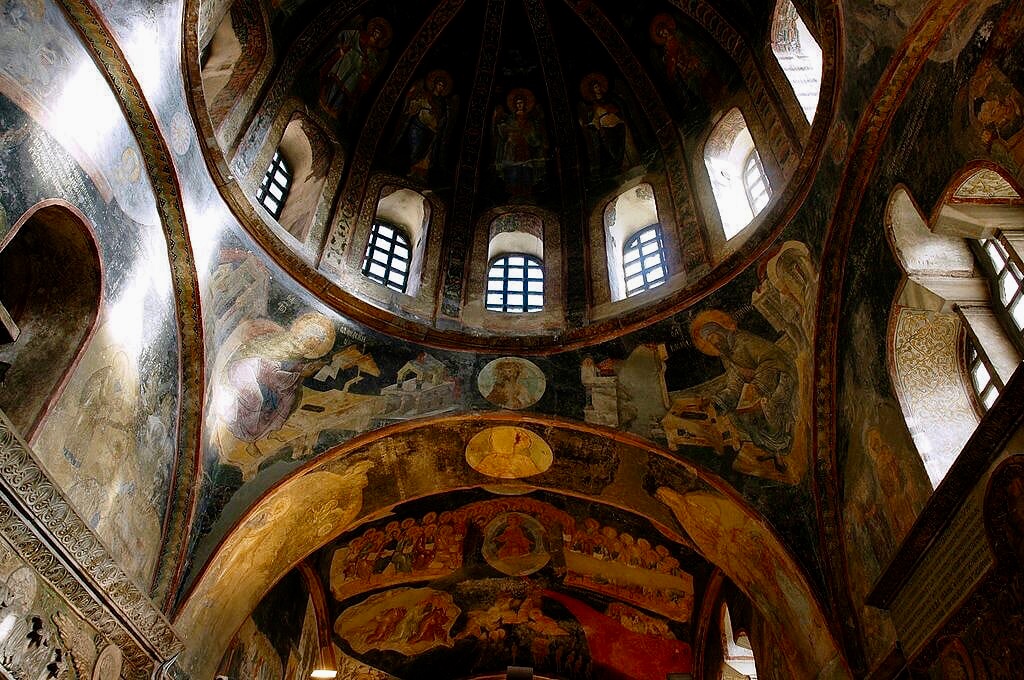
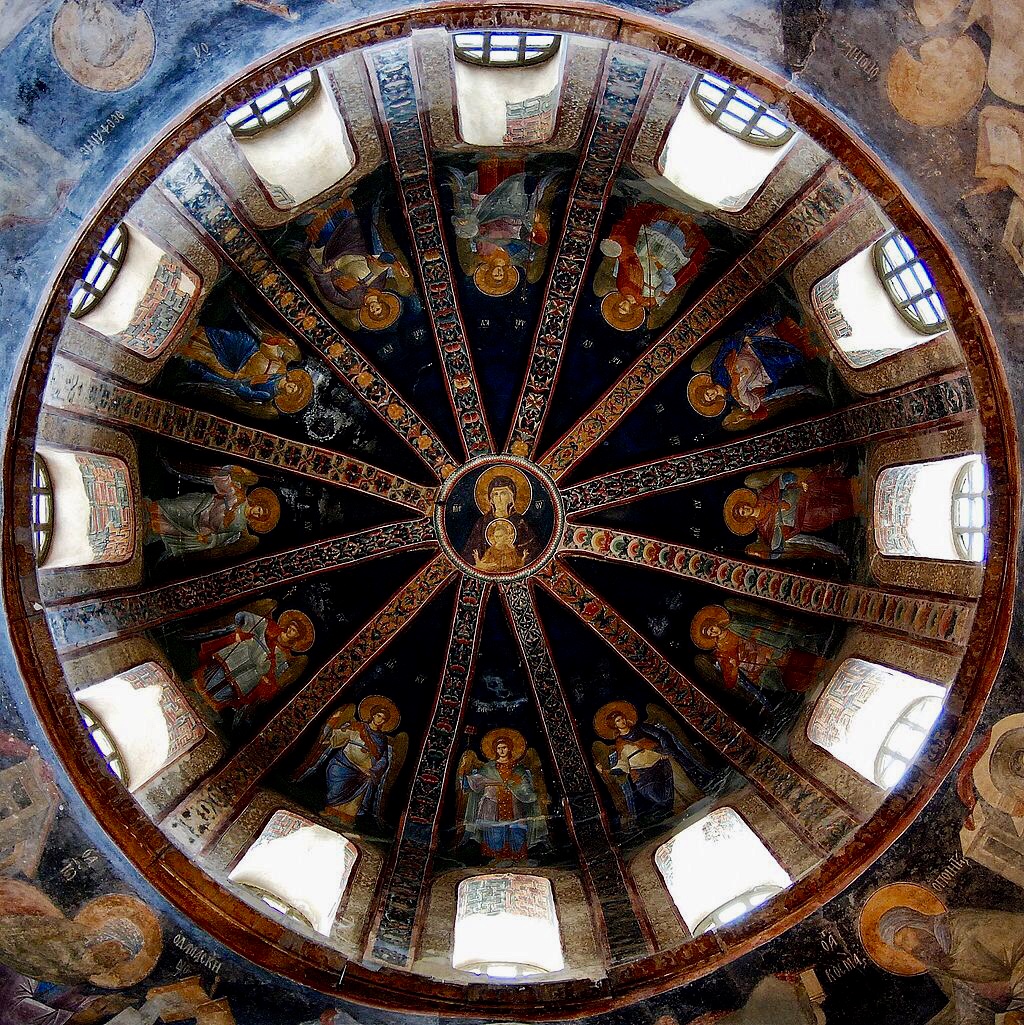
surrounded by angels
Source: thebyzantinelegacy.com
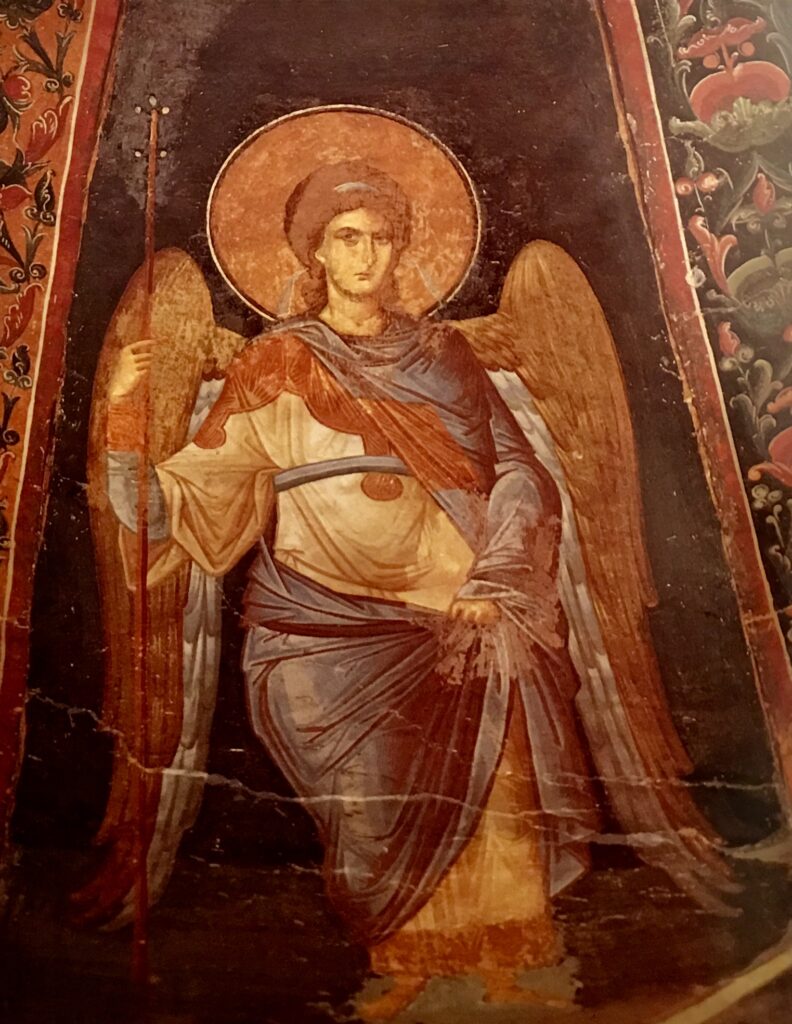
Source: Akşit, İ., The Museum of Chora, Mosaics and Frescoes
It has always been a stunning experience to visit the Chora. A place that you want to go time and time again. In their great book Strolling Through Istanbul, Hilary Sumner-Boyd and John Freely describe the mosaics and the frescoes of the Chora Church as, “… the most important and extensive series of Byzantine paintings in the city and among the most interesting in the world.” The authors consider them identical in value with the work of the Italian artist Giotto at the Scrovegni Chapel in Padova. According to them, created almost exactly in the same period, Giotto’s work and the mosaics and frescoes of the Chora breathe the same spirit of life and reality that is typical of the dawn of the Renaissance.
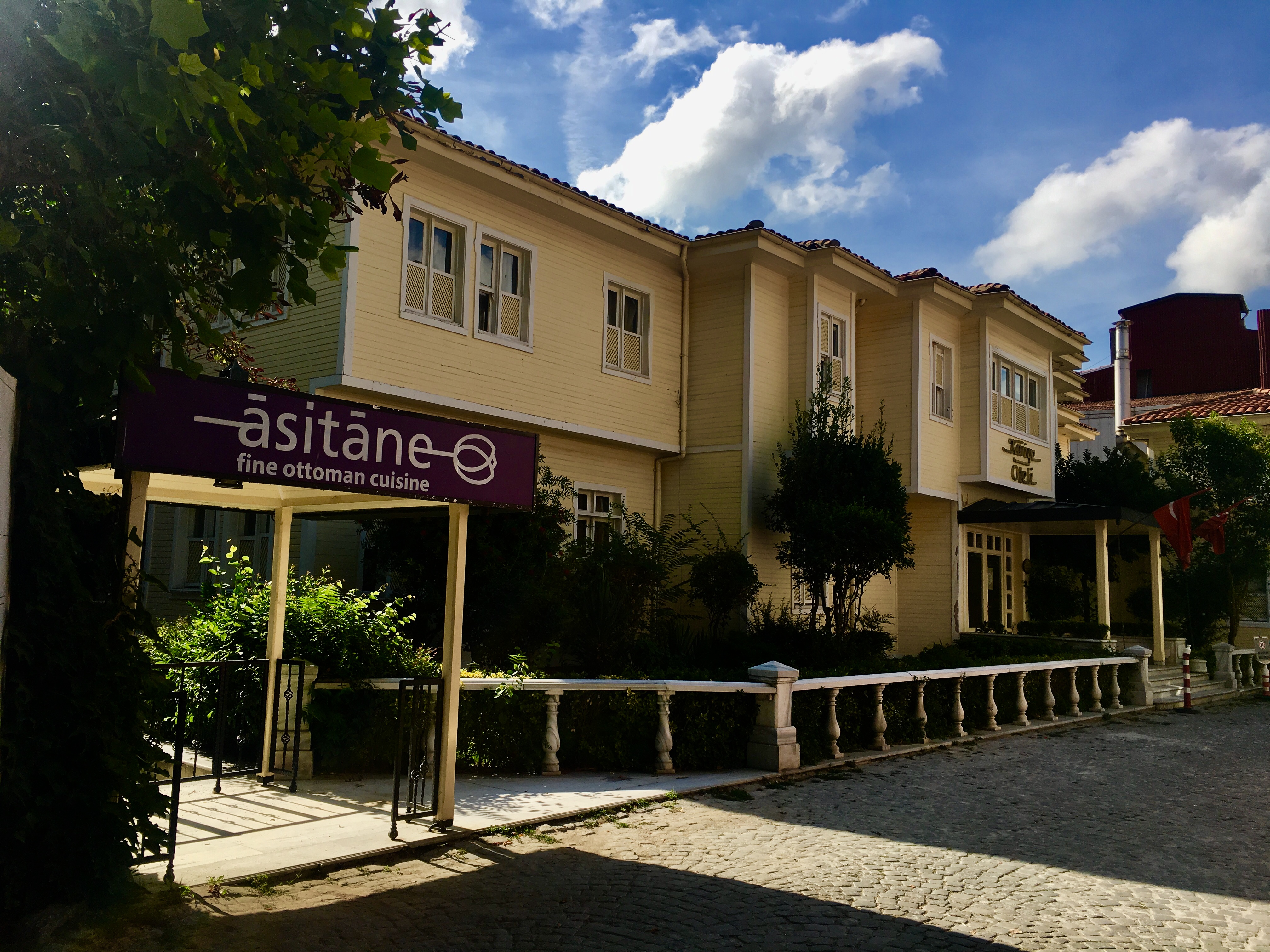
Perfect place to end the visit and taste Ottoman cuisine…
———————————-
Sources:
1- Akşit, İ., The Museum of Chora, Mosaics and Frescoes.
2- Sumner-Boyd,H. and Freely J., Strolling Through Istanbul.
3- http://www.culturecityistanbul.blogspot.com
4- http://www.thebyzantinelegacy.com
5- http://www.churchofchora.com/
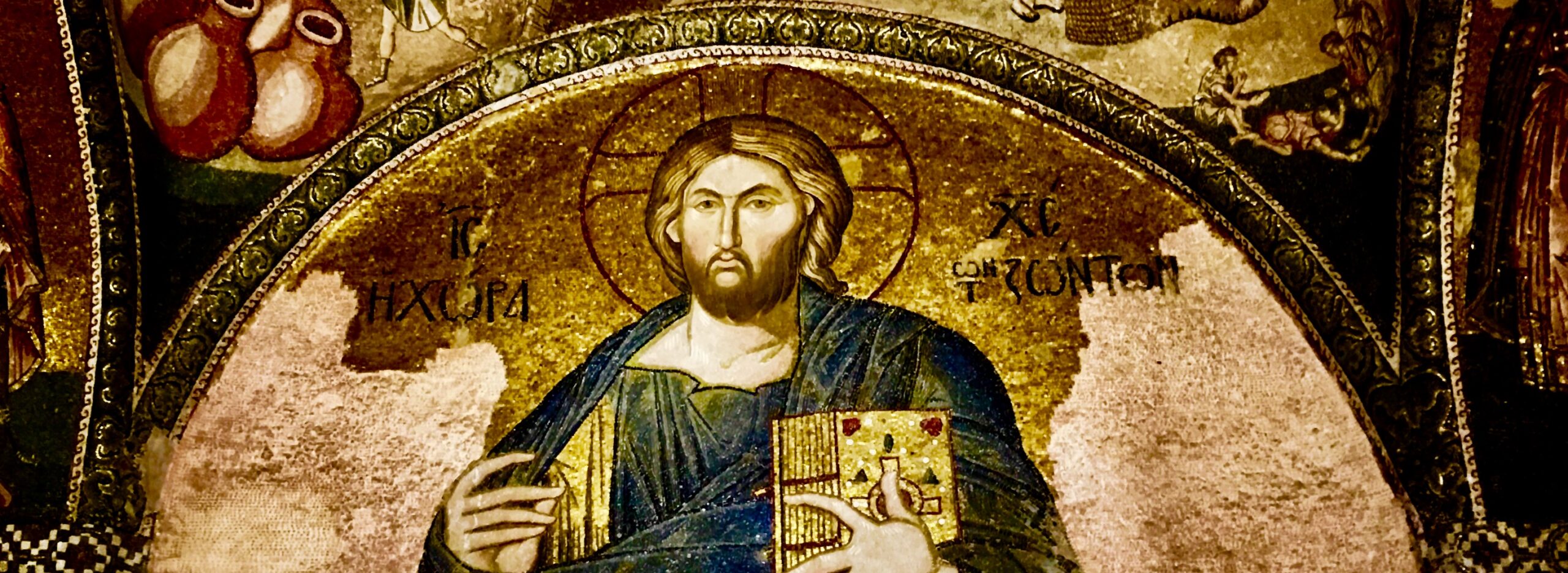
Ülgenciğim, ellerin dert görmesin canım her yazını büyük bir sevgi ve ilgiyle okuyup aydınlanıyorum. Senin gibi aydınlar her daim var olsun ki dünyamız güzelleşsin. Seni kutluyor yanaklarından öpüyorum canım.
Gülten’ciğim,
Çok teşekkür ederim. Çok naziksin. Yazılarımı okuman ve beğenmen benim için büyük bir motivasyon kaynağı. Eksik olma. Senin gibi bir dostum olduğu için çok şanslıyım.
Sevgilerimle…